Kitchen Debate
description: exchanges of views between Nikita Khrushchev and Richard Nixon at an exhibition in Moscow in July 1959
41 results
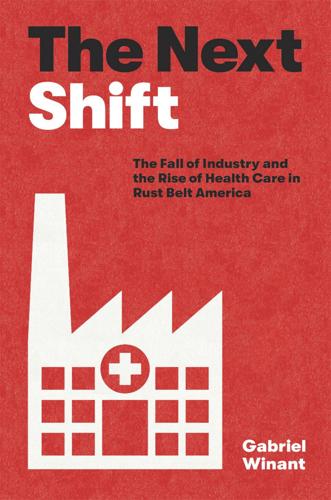
The Next Shift: The Fall of Industry and the Rise of Health Care in Rust Belt America
by
Gabriel Winant
Published 23 Mar 2021
The USWA struck the entire basic steel industry in 1946, 1949, 1952, 1956, and 1959. Across this period, in addition to securing fringe benefits, workers also won dramatic wage gains that easily outstripped inflation. By the end of the 1950s, the union secured increases that made its members the very symbol of the postwar promise to the US working class. In his 1959 “kitchen debate” with Nikita Khrushchev, Richard Nixon made steel labor his first talking point. “Our steel workers as you know, are now on strike. But any steel worker could buy this house. They earn $3 an hour.”19 Although labor costs per ton were rising fast and plant productivity was not keeping pace, the industry remained profitable because labor was a relatively small proportion of all costs—but the trend was unsustainable.
…
Data from American Iron and Steel Institute, Annual Statistical Report, qtd. in Tiffany, The Decline of American Steel, 27. 17. Census of Population, 1950, table 35; John D. Stephens and Brian P. Holly, “City System Behaviour and Corporate Influence: The Headquarters Location of US Industrial Firms, 1955–75,” Urban Studies 18, no. 3 (October 1981), 296. 18. Census of Population, 1950, table 83. 19. “The Kitchen Debate—Transcript,” July 24, 1959, available at http://www.foia.cia.gov/sites/default/files/document_conversions/16/1959-07-24.pdf. 20. Stein, Running Steel, 7–36; Lichtenstein, State of the Union, 122–25; Meg Jacobs, Pocketbook Politics: Economic Citizenship in Twentieth-Century America (Princeton, NJ: Princeton University Press, 2004), 179–261. 21.
…
Henderson, interview; I-1-A, WEMHOHPR; I-22-B, p. 47, WEMHOHPR; I-8-A, WEMHOHPR; Earline Coburn, interview with Gabriel Winant, July 20, 2016. 49. I-5-B, WEMHOHPR. 50. Beth Novak diary, July 24 1961-July 25, 1961. 51. See also Karen Olson, Wives of Steel: Voices of Women from the Sparrows Point Steelmaking Communities (University Park: Pennsylvania State University Press, 2005). 52. The Kitchen Debate—Transcript, July 24, 1959, available at http://www.foia.cia.gov/sites/default/files/document_conversions/16/1959-07-24.pdf; S-25-C, pp. 8–9, WEMHOHPR. 53. McColloch, “Modest but Adequate”; “Out-of-Work Steelworker’s Family in Dire Plight,” Pittsburgh Courier, April 1, 1960; Henry, interview. 54.
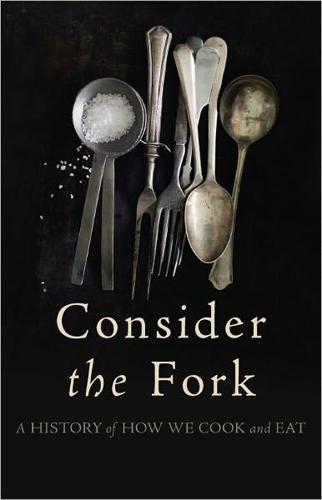
Consider the Fork: A History of How We Cook and Eat
by
Bee Wilson
Published 14 Sep 2012
It was the most high-profile exchange between Soviets and Americans since the Geneva Summit of 1955, but far more informal. Laughing and sometimes jabbing fingers at one another, the two men debated the merits of capitalism and communism. Which country had the more advanced technologies? Which way of life was better? The conversation—which has since been christened the Kitchen Debate—hinged not on weapons or the space race but on washing machines and kitchen gadgets. The occasion was the opening day of the American National Exhibition at Sokolniki Park, a municipal park of “leisure and culture.” This was the first time many Russians had encountered the American lifestyle firsthand: the first time they tasted Pepsi-Cola or set eyes on big American refrigerators.
…
On chopsticks, see Barthes (1982), Chang (1977), Coe (2009), Hosking (1996), Ishige (2001). Bill Clinton’s speech about sporks is available at http://www.c-spanvideo.org/program/63940-I, accessed July 2011. Also on sporks, see Koerner (2006), Lawrence (2010), and www.spork.org. CHAPTER SEVEN: ICE Much has been written about the Kitchen Debate. See, for example, Reid (2002), Reid (2005), Reid (2009), Oldenziel and Zachmann (2009), Larner (1986). For a contemporary account, see Salisbury (1959). On the history of ice, see David (1994a), Beckmann (1817), Masters (1844). The greatest book on America and refrigeration is the panoramic and phenomenally scholarly Anderson (1953).
…
Kurti, Nicholas, and Kurti, Giana, eds. (1988). But the Crackling Is Superb: An Anthology on Food and Drink by Fellows and Foreign Members of the Royal Society. Bristol, Hilger. Lamb, Charles (2011). A Dissertation upon Roast Pig and Other Essays. London, Penguin. Larner, John W. (1986). “Judging the Kitchen Debate.” OAH Magazine of History, vol. 2, no. 1, pp. 25–26. Larson, Egon (1961). A History of Invention. London, Phoenix House. Lawrence, Keith (2010). “Costs Add Up for Jail’s ‘Sporks,’ Other Items.” McClatchy-Tribune Business News, July 6. Leach, Helen M. (1982). “Cooking Without Pots: Aspects of Prehistoric and Traditional Polynesian Cooking.”
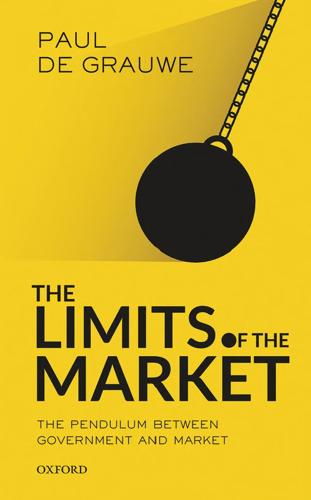
The Limits of the Market: The Pendulum Between Government and Market
by
Paul de Grauwe
and
Anna Asbury
Published 12 Mar 2017
For many people in the post-war period the rise of governments as the controllers of economies seemed an inevitable and permanent % 90 80 70 60 50 40 30 20 10 0 1900 1903 1906 1909 1912 1915 1918 1921 1924 1927 1930 1933 1936 1939 1942 1945 1948 1951 1954 1957 1960 1963 1966 1969 1972 1975 1978 MARGINAL TAX RATES IN HIGHEST INCOME BRACKETS T HE GREAT ECONOM IC P ENDULUM US UK Germany France Figure .. Highest rates of personal income tax Source: Piketty, <http://piketty.pse.ens.fr/en/capital21c2> fact. Many people saw the superiority of centrally planned economies as self-evident. In the famous Kitchen Debate between Richard Nixon, then vice president of the United States, and Nikita Khrushchev, then leader of the Soviet Union, Khrushchev declared with great conviction that the Soviet Union would catch up with the US before the end of the century. Many people were indeed convinced that this would happen.
…
. Gini coefficients b global capitalism b global financial crisis () immigration – imperialism import protection income, share of total going to top % f, INDEX income distribution –b, , , –, income equality and economic growth trade-off , f, income inequality , f, , , , reformist scenario United Kingdom and United States income per capita , f income redistribution policies income tax f, , on highest incomes , , –, , , – productivity, labour costs and public sector in selected countries f India five-year plans gross domestic product (GDP) per capita f individual rationality and collective rationality –, –, , environment (external limit) external limits of governments industrial production, worldwide inequality –, assets – reduction and social and political instability , f wealth , world –b see also income inequality inflation and lender of last resort –b insolvency/bankruptcy , , interbank market interest rates , –, – on Spanish and British ten-year government bonds f internal contradictions of capitalism –, internal limits of capitalism – internal limits of free market system –, , , internal limits of government – winner-takes-all phenomenon – International Monetary Fund (IMF) , investment boom in eurozone projects (efficiency) public as share of GDP ‘invisible hand’ , Ireland eurozone government bond spreads, ten-year f global financial crisis () labour costs, gross hourly f Italy eurozone government bond spreads, ten-year f gross domestic product (GDP) per capita f labour costs, gross hourly f social security spending as percentage of government spending f Jacobson Schwartz, A. n Japan gross domestic product (GDP) per capita f liberalization and material prosperity Kahneman, D. Keynes, J. M. –, – Khrushchev, N. Kitchen Debate () Kuznets, S./Kuznets curve , f, labour costs burden – and employer contributions in European Union f, f gross hourly , f hourly and national competitiveness f Northern Europe Latvia labour costs, gross hourly f lender of last resort European Central Bank (ECB) – and inflation –b Lenin, V. , , liberalization , , –b Liebknecht, K. – linear theories on the rise and fall of capitalism – Lenin, V. Liebknecht, K. – Luxemburg, R. – Marx, K. – Polanyi, K. – Schumpeter, J. – INDEX liquidity crisis , , , –b Lithuania labour costs, gross hourly f Lomborg, B. –, Luxembourg employer contribution and labour costs labour costs, gross hourly f Luxemburg, R. , – McAfee, A. Malta labour costs, gross hourly f market fundamentalists –, , f market/government hierarchy – economic values hierarchy –b labour costs, high and prosperity – labour costs burden – productivity, labour costs and public sector – market sector , market system –, , – competition and cooperation return of (s) – rise of – technological progress see also free market system; self-regulation in the market system Marx, K. , –b, , –, – material production , b, – Mayans in Middle America Mediterranean model and social security minimum reserve requirements b money base b, f money supply b, f, moral hazard –, –, motivation, intrinsic and extrinsic –, , – Netherlands eurozone government bond spreads, ten-year f labour costs, gross hourly f social security spending as percentage of government spending f New Deal Nixon, R. non-linearity –, , – North America gross domestic product (GDP) per capita, average annual growth in , f, f, growth production per capita since industrial revolution , f see also United States Northern Europe labour costs f, , labour costs, high and prosperity productivity, labour costs and public sector –, North Korea , f Norway labour costs, gross hourly f Olson, M. Organization for Economic Co-operation and Development (OECD) – social security spending as percentage of government spending f Outright Monetary Transactions (OMT) outsourcing ownership rights Packard, V.

The Smart Wife: Why Siri, Alexa, and Other Smart Home Devices Need a Feminist Reboot
by
Yolande Strengers
and
Jenny Kennedy
Published 14 Apr 2020
We are not the first scholars to notice that traditional forms of domestic labor have been mostly absent from visions of the smart home or substantially undervalued.37 Lynn Spigel, an esteemed professor of screen cultures, analyzed early smart home visions from 1940 to 1960 in the postwar, Cold War, and space-race United States. She found that these visions depicted women liberated from chores primarily associated with the kitchen, while vastly undervaluing and underacknowledging the other domestic work that women were doing at the time. For example, the “kitchen debate” between Richard Nixon and Nikita Khrushchev in 1959 depicted the United States’ future “as one huge kitchen of tomorrow,” but ignored the “sweeping, washing, vacuuming, and tidying-up” that tied women to other domestic spheres.38 In one of the few gendered analyses of the smart home, sociology professor Anne-Jorunn Berg suggests this oversight is because technology is traditionally “men’s domain,” whereas the home is traditionally women’s.
…
See Rosie (The Jetsons) Jewish communities, 93 Jibo, 21, 49, 59, 249n42 Jobs, Steve, 10, 193 Johansson, Scarlett, 133, 134 Joi (Blade Runner 2049), 125 Joler, Vladen, 97–98, 99, 103, 107, 189, 220 June smart oven, 40 K (Blade Runner 2049), 125 KAI (Kasisto), 170–171, 219 Kawaii (cuteness), 68–70 Kember, Sarah, 150 Kessler, Suzanne, 62 Khrushchev, Nikita, 32 Killer apps, 28 Kim, Hyunsuk, 58–59 Kindle (Amazon), 81, 82, 83, 106 King, Ynestra, 80 Kircher, Athanasius, 189 Kismet, 51, 71, 73 Kissamitaki, Maritsa, 110 Kitchen appliances, 40 Kitchen debate (Nixon and Khrushchev), 32 Kondo, Akihiko, 126 Kuyda, Eugenia, 171 Lady Gaga, 126, 210 Lang, Fritz, 153 Large-eyed robots, 56, 68–69 Lars and the Real Girl (film), 130–131, 218 Laundroid robot, 29 Laundry assistants, 29–30, 34–35 La Vie Électrique (Robida), 150 Legal rights for robots, 173, 174 Legend, John, 165 Lennar Corporation, 82 Leong, Dymples, 104 L’Éve Future (Villiers), 152–153 Levy, David, 117, 126 LG, 26, 145–146, 148 Li, Fei-Fei, 212–213 Liautaud, Susan, 188 Light, Ann, 210 Likability of social robots, 64–65, 77 Lily (robosexual woman), 126 Limp, David, 79 Lin, Patrick, 135 Linguistic traits of robots, 68 Living democracies, 105–106 Lopez-Neira, Isabel, 201, 202 Lora DiCarlo, 123 Loss of control over smart wives, 193–194 Love and Sex with Robots (Levy), 117 Love Me (documentary), 129 Lumidoll, 119 Lutron, 92 Ma, Ricky, 133, 134 Maalsen, Sophia, 195 MacKay, Kevin, 85 Made by Humans (Broad), 172 Mail-order bride industry, 128–129 Maines, Rachel, 148 Maiti, Aki, 71 Male-identified robots and assistants, 16, 21, 71, 113–114, 161–162, 165 Malesky, Edmund, 85 Male-specific smart wives, 35–37 Manga (comic books), 65, 66, 68–69 Manners when using smart wives, 167–168 Manual work involved with smart homes, 43 Marcussen, Benita, 131–132 Maria (Metropolis), 67, 153 Mariette (Blade Runner 2049), 125 Marital rape, 8 Marketing smart wives to women, 182–186 Marriage and wife drought, 6–8 Marriage to smart wives, 126, 221 Marriage Trafficking (Quek), 129 Masculinity and technology, 10–11, 32, 34, 43–44, 176, 177–181, 202, 204 Matsui, Tatsuya, 71 Matsuko Deluxe, 210 Matsukoroid, 210 Mattel, 196–197 Maushart, Susan, 6, 7, 8 McCann, Hannah, 209 McKenna, Wendy, 62 McMahon, John, 25, 41 McMullen, Matt, 109, 112, 114, 115, 118, 121 Media equation theory, 159 Media reports of male violence against women, 214 Media representations of smart wives, 214–215, 217–219 Mellor, Mary, 86 Men & Dolls (Marcussen), 131–132 Metropolis (film), 67, 153 Meyerowitz, Joanne, 5 Microsoft as Big Five member, 85 Cortana, 11, 83, 146, 148, 154, 182 employment at and gender, 9 ethical guidelines for AI, 226 Ms.
…
See Pepper (SoftBank Robotics) SolanaX (RealDollX), 120–121 Solutionism, 28 Somnox, 51 Son, Masayoshi, 51–52 Søndergaard, Marie, 221 Sone, Yuji, 65, 67, 68, 74 Sophia (Hanson Robotics), 146, 147, 148, 174 Søraa, Roger, 55, 56 South Korea, 4, 40, 41 Special Eurobarometer survey on public attitudes toward robots (2012), 40 Spigel, Lynn, 32 Spotify, 192 Spousal rape, 8 Stalking, 199–200 STAR Labs, 64, 67, 171 Star Trek (TV series), 79, 102–105, 106, 107, 198 Staying with the Trouble (Haraway), 208 Stepford Wives (original film and remake), The, 14, 15, 198, 217, 218 Sterling, Bruce, 85 Su, Norman Makoto, 132–133 Submissive-dominant sexual fantasies, 138 Subservience of smart wives, 164–165, 167 Sung, Ja-Young, 40 Surveillance capitalism, 194–195, 224 Surveillance technologies, 177, 193–198 Sustainable Maintainer (Panasonic), 29 Sweeney, Miriam, 158 Takagi, Shin, 135 Takahashi, Tomotaka, 70–71 Talk-Bot (C & C Creations), 160–162 Talking statue (Kircher), 189 Tamagotchi, 71, 219–220 Tanczer, Leonie, 193, 194, 201 Tau (film), 198 Tay (Microsoft), 157–158 Technochauvinism, 28 Technology of Orgasm (Maines), The, 148 Technology promoted through use of women’s bodies, history of, 149–151 Technosexual experiences and human relationships, 117–118 Teigen, Chrissy, 165 Teledildonic devices, 118, 123 Terminator (film series), The, 67, 198 Thermomix, 40 Tolmie, Peter, 43 Tomb Raider (video game), 136 To Save Everything, Click Here (Morozov), 28 Transdisciplinary approach to technology, need for, 213 Treatment of technologies by users, 159–161 Trottla, 135 TrueCompanion.com, 115 Roxxxy, 113, 114, 118, 134–135 Tsuchiya, Hideo, 128 Tufekci, Zeynep, 187–188 Turkle, Sherry, 16, 71, 196–197 Twitter, 98, 157–158 Tyler, Meagan, 136 Uncanny valley theory, 67–68, 118 UNESCO and EQUALS Skills Coalition, report on gender divides in digital skills, 10, 162, 166, 172, 178, 179, 203, 213 Unicole Unicron, 139 UNI Global Union, 225 United Kingdom computer science work and gender, 10 energy consumption, 99 jet plane command systems, 16 1950s’ housewife, 3–4 unpaid care of people with dementia, 53 United Nations Office on Drugs and Crime, 199 United States and Amazon, 81, 84 Bud-E beer fridge, 35–36 Classification and Ratings Administration, 222 computer science work and gender, 9 digital voice assistant market, 8, 79 and ecological footprint model, 86 gender and uptake of smart wives, 9 jet plane command systems, 16 and The Jetsons, 25 marital rape, 8 1950s’ housewife, 3–4 Nixon and Khrushchev’s kitchen debate, 32 Orthodox Jewish communities, 93 right to repair laws, 106 stalking, 200 survey on gender equality in technology sector, 11 Unpaid care of people with dementia, 53 Uptake of smart wives, 1–2, 9, 30–31 Usability and functionality of smart wives, 31, 39, 183–184 Vacuum cleaners. See Robotic vacuum cleaners (robovacs) Vatter, Brian, 124 Vatter, Suki, 124 Verrill, Timothy, 201 Vertesi, Janet, 124 Vesta (Amazon), 26–27, 150–151 Vibrators, 123, 124, 148–149 Video games, 11, 135–137, 146, 148 Video streaming, 100 Villiers de l’Isle-Adam, Auguste, 152–153 Vinclu, 12–13 Virtual reality porn, 13, 118, 123–124 Vivi (iQiyi), 155 Voice-activated assistants.
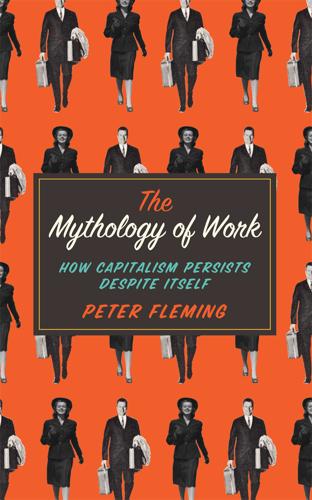
Mythology of Work: How Capitalism Persists Despite Itself
by
Peter Fleming
Published 14 Jun 2015
The peasant knowledge we mentioned in Chapter 2 allows us to remember the present and see the unseen extremism of our domination. But how does such ‘dissenting consent’ work in the context of dialogical exchange? The paradoxical ‘visible intrigue’ of cold war politics presents a myriad of examples of this cat and mouse game. The famous ‘Kitchen Debate’ might serve as a useful illustration. When, during the early 1960s, the Soviet leader Nikita Khrushchev was shown around a model American kitchen at a trade exhibition in Moscow by US vice-president Richard Nixon, an unexpected debate ensued before the world’s media. Nixon knew full well that the press in the Soviet Union was highly censored.
…
capitalism ref1, ref2, ref3, ref4 General Motors plant (Michigan) ref1 Goffee, R. ref1 Goldman Sachs ref1 The Good Soldier Svejk (Hasek) ref1 Gordon, D. ref1 Gorz, A. ref1, ref2 Graeber, D. ref1 Groundhog Day (Ramis) ref1 Guattari, F. ref1, ref2, ref3 on criticism/criticality ref1 and de-subjectification ref1 language ref1, ref2 Gujarat NRE ref1 Gulf of Mexico oil spill (2010) ref1 Hamper, B. ref1 Hanlon, G. ref1 Hardt, M. ref1 Hart, A. ref1 Harvard Business Review (HBR) ref1 Harvey, D. ref1, ref2 Hayek, F. ref1, ref2, ref3 health and safety ref1, ref2 ‘Help to Buy’ support scheme ref1 Hirschhorn, N. ref1 Hodgkinson, T. ref1 holiday policy ref1 Houellebecq, Michel ref1, ref2, ref3 human capital ref1, ref2, ref3, ref4, ref5, ref6, ref7 human relations movement ref1 Human Resource Management (HRM) ref1, ref2, ref3, ref4, ref5, ref6 humour ref1 ‘I, Job’ function ref1, ref2, ref3, ref4, ref5, ref6 and biopower ref1, ref2 and death drive ref1, ref2 as escape into work ref1 and illness ref1, ref2, ref3 resisting ref1, ref2, ref3, ref4, ref5, ref6 see also escape; totality refusal see also work, as all-encompassing; working hours illegal immigrants, deportations ref1 illness ref1, ref2 collective ref1, ref2 see also Social Patients’ Collective as desirable experience ref1, ref2, ref3, ref4 of managers ref1, ref2 and productive power ref1, ref2 as weapon against capitalism ref1 ‘immersion room’ exercise ref1, ref2, ref3, ref4 imperceptibility ref1 see also invisibility incentivization ref1 indexation process ref1, ref2, ref3, ref4, ref5 informality and authoritarianism ref1, ref2 see also deformalization insecurity ref1 Institute of Leadership and Management (ILM) ref1, ref2, ref3 invisibility ref1, ref2 ‘Invisible Committee’ ref1, ref2 Italian autonomist thought ref1, ref2 Jameson, F. ref1 Jones, G. ref1 Junjie, Li ref1 Kamp, A. ref1 Kein Mensch ist illegal ref1 Kellaway, L. ref1 Key Performance Indicators (KPIs) ref1 Keynes, J.M. ref1, ref2 Khrushchev, Nikita ref1, ref2 Kim, Jonathan ref1 King, Stephen ref1 ‘Kitchen Debate’ ref1 Kramer, M. ref1, ref2 labour unions ref1 dissolution of ref1, ref2 language, evolution of ref1 Larkin, P. ref1 Latour, B. ref1, ref2 Laval, C. ref1, ref2 Lazzarato, M. ref1, ref2 leaders backgrounds ref1 remuneration and bonuses ref1, ref2, ref3, ref4, ref5 see also managers Lefebvre, H. ref1 Leidner, R. ref1 Lewin, D. ref1 liberation management ref1, ref2, ref3, ref4, ref5 life itself, enlisting ref1, ref2, ref3, ref4, ref5 lines of flight ref1, ref2 Lordon, F. ref1, ref2, ref3 Lucas, R. ref1, ref2 Lukács, G. ref1 Lynch, R. ref1 McChesney, R. ref1 McGregor, D. ref1 management ref1, ref2 and class function ref1, ref2 as co-ordination ref1 and inducement of willing obedience ref1, ref2 information deficit ref1 and power ref1, ref2 self-justification rituals ref1 as transferable skill ref1, ref2 managerialism ref1, ref2, ref3, ref4, ref5, ref6, ref7 and abandonment ideology ref1, ref2, ref3, ref4, ref5 and boundary management ref1 and conflict-seeking behaviour ref1 division between managers and managed ref1, ref2 general principles of ref1 and leadership ref1 profligate management function ref1 refusing ref1 and securitization ref1 as self-referential abstraction ref1 managers as abandonment enablers ref1, ref2 and deformalization ref1 and engagement of workers ref1, ref2 lack of practical experience ref1 overwork ref1, ref2 see also leaders Marcuse, H. ref1 Market Basket supermarket chain ref1 Marx, K. ref1, ref2, ref3, ref4, ref5, ref6 Maslow, A. ref1 Matten, D. ref1 meat consumption ref1 Meek, J. ref1 Meyerson, D. ref1 Michelli, J. ref1 Miller, W.I. ref1 Mitchell, David ref1 mobile technology ref1, ref2, ref3, ref4, ref5, ref6, ref7 Modafinil ref1, ref2 Monaghan, A. ref1 money ref1, ref2 see also accumulation Mooney, G. ref1 Moore, A.E. ref1 Moore, Michael ref1, ref2 music industry ref1 Naidoo, Kumi ref1 NASA ref1 Natali, Vincenzo ref1 Negri, A. ref1, ref2 neoliberal capitalism ref1, ref2, ref3, ref4, ref5, ref6, ref7 and bureaucracy ref1 and ideal worker ref1, ref2 and non-work time ref1, ref2 and paranoia ref1, ref2 resisting ref1, ref2 see also post-labour strategy and threat of abandonment ref1, ref2 and truth telling ref1, ref2, ref3 neoliberalism ref1, ref2, ref3, ref4, ref5, ref6 and class relations ref1, ref2, ref3 and disciplinary power ref1 and human-capital theory ref1 and impossibility ref1, ref2, ref3, ref4, ref5, ref6 and micro-fascism ref1 and reign of technocrats ref1 role of state ref1 and truth telling ref1, ref2 and worker engagement ref1, ref2, ref3 Nestlé ref1 New Public Management ref1, ref2 New Zealand, and capitalist deregulation ref1 New Zealand Oil and Gas (NZOG) ref1 Newman, Maurice ref1 Nietzsche, Friedrich ref1, ref2 Nixon, Richard ref1, ref2 Nyhan, B. ref1 obsession ref1, ref2, ref3, ref4, ref5, ref6, ref7, ref8 Onionhead program ref1 overcoding ref1, ref2, ref3, ref4, ref5, ref6, ref7 The Pain Journal (Flanagan) ref1, ref2, ref3 paranoia ref1, ref2, ref3, ref4 overwork/paranoia complex ref1, ref2 Paris Commune ref1, ref2 Parkinson’s Law ref1 Parnet, C. ref1 Parsons, T. ref1 Peep Show (TV comedy) ref1 pensions ref1, ref2 personnel management ref1 see also Human Resource Management Peters, T. ref1 Philip Morris ref1 Pike River Coal mine (New Zealand) ref1 Pollack, Sydney ref1 Pook, L. ref1 Porter, M. ref1, ref2 post-labour strategy, recommendations ref1 postmodernism ref1, ref2, ref3 power ref1, ref2, ref3, ref4, ref5 and truth telling ref1 Prasad, M. ref1 Price, S. ref1 private companies, transferring to public hands ref1 privatization ref1, ref2, ref3, ref4, ref5, ref6, ref7 profit maximization ref1, ref2, ref3, ref4, ref5 quantitative easing ref1 Rand, Ayn ref1 rationalization ref1, ref2, ref3 Reifler, J. ref1 reserve army of the unemployed ref1 Ressler, C. ref1 results-only work environment (ROWE) ref1, ref2, ref3 Rimbaud, A. ref1 Rio+20 Earth Summit (2012) ref1 ‘riot grrrl’ bands ref1 rituals of truth and reconciliation ref1 Roberts, J. ref1 Roger Award ref1 Roger and Me (Moore) ref1 Rosenblatt, R. ref1 Ross, A. ref1, ref2 Ross, K. ref1 Rudd, Kevin ref1 ruling class fear of work-free world ref1, ref2 and paranoia ref1, ref2 Sade, Marquis de ref1 Sallaz, J. ref1 Saurashtra Fuels ref1 Scarry, E. ref1 Securicor (G4S) ref1 Segarra, Carmen ref1 self-abnegation ref1 self-employment ref1 self-management ref1, ref2, ref3, ref4, ref5 self-preservation ref1, ref2, ref3, ref4 self-sufficiency ref1, ref2, ref3 shareholder capitalism ref1, ref2, ref3, ref4 shift work ref1, ref2 see also working hours Shragai, N. ref1 sleep and circadian rhythms ref1 as form of resistance ref1 working in ref1, ref2, ref3 smart drugs ref1, ref2 Smith, Roger ref1 smoking and addiction ref1 dangers of ref1, ref2 scientific research ref1 sociability ref1, ref2 ‘the social’ ref1, ref2 social factory ref1, ref2, ref3, ref4, ref5, ref6, ref7 and structure of work ref1 social media ref1 Social Mobility and Child Poverty Commission ref1 Social Patients’ Collective (SPK) ref1, ref2, ref3 social surplus (commons) ref1, ref2, ref3 socialism ref1, ref2, ref3, ref4 Sontag, S. ref1 Spicer, A. ref1 stakeholder management ref1, ref2 Starbucks ref1 state, theory of ref1 subcontracting ref1, ref2, ref3 subsidization ref1, ref2, ref3, ref4, ref5, ref6, ref7 suicide as act of refusal ref1 Freud’s definition ref1 work-related ref1, ref2, ref3, ref4, ref5 surplus labour ref1, ref2 surplus living wage ref1 ‘tagged’ employees ref1 ‘tagged’ prisoner ref1 Tally, Richard ref1 taxation ref1, ref2, ref3 Taylor, F.W. ref1 Taylor, S. ref1 Taylorism ref1 technological progress, and emancipation from labour ref1 Thatcher, Margaret ref1 Thatcherism ref1 They Shoot Horses Don’t They?
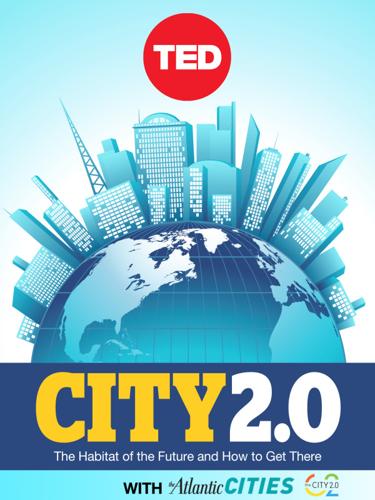
City 2.0: The Habitat of the Future and How to Get There
by
Ted Books
Published 20 Feb 2013
Molly Turner, director of public policy for the short-term rental lodging website Airbnb, pins the turning point to an iconic image: Richard Nixon, in Moscow, introducing Nikita Khrushchev to the modern marvel of the washing machine available for private consumption in every American home. Beginning with the era of that washing machine, Turner argues, we forgot how to share. In the so-called Kitchen Debate, Vice President Richard Nixon and Soviet Premier Nikita Khrushchev dispute their countries’ relative merits while touring the United States exhibit in Moscow in 1959. Image: Associated Press We came to prize instead personal ownership — of multiple cars, of large homes with private backyards and space inside for appliances that would never fit in a modest city walk-up.

The Rise and Fall of the Neoliberal Order: America and the World in the Free Market Era
by
Gary Gerstle
Published 14 Oct 2022
Which system was better at generating a consumer society—filling stores with alluring goods, putting citizens of the two systems in a position to participate fully in those marketplaces—became a central bone of contention between the Cold War adversaries. Hence the slightly comical but deadly serious “Kitchen Debate” involving Nikita Khrushchev and Richard Nixon in Moscow in 1959. This was the third meeting of the first secretary of the Soviet Union and the vice-president of the United States to debate the comparative merits of the communist and capitalist systems. This one occurred inside a cutaway kitchen of an American suburban home whose components had been disassembled for transport to Russia and then reassembled in Moscow just for this occasion.
…
Morgan Chase, 218 Jackson, Andrew, 265 Japanese manufacturers, 58–59, 62 Jim Crow, 27, 48–50, 51–53, 79, 95 Jobs, Steve, 8–9, 103–4 John Birch Society, 109 Johnson, Lyndon B., 42, 43–44, 53, 54–56, 113, 287 Jones, Paula, 186–87 Justice Democrats, 278–79 Kahn, Alfred, 32 Kelton, Stephanie, 284 Kennedy, Anthony, 125 Kennedy, John F., 52–53, 119–20, 152–53, 171 Kennedy, Ted, 138–39 Kershaw, Ian, 141 Kesey, Ken, 103–4 Keynes, John Maynard, 22–23 Keynesianism, 22–23, 36–37, 44–46, 53–54, 68–69, 109–10 Keyworth, George, 160–61, 162–63 Khan, Lina, 284 Khrushchev, Nikita, 44–45, 69 King, Martin Luther, Jr., 52–53 Kingsley, Michael, 180–81 Kissinger, Henry, 198 Kitchen Debate, 44–45 Kitman, Marvin, 168–69 Klein, Naomi, 201, 254–55 Koch, Charles, 109, 114, 240–41, 250–51, 270 Koch, Fred, 109, 114, 240–41, 250–51, 270 Koch Industries, 114 Koestler, Arthur, 35–36 Kohl, Helmut, 177–78 Korean War, 37 Kristol, Irving, 2, 132–34 Krugman, Paul, 25 labor law, 45, 68, 110 labor unions, 26–27, 33, 37, 81–82, 109–10, 112, 135, 174–75, 179, 211, 235. see also organized labor and trade unions laissez-faire politics, 21, 23, 38–39, 82–83 Lasn, Kalle, 251–52 Latin America, 9–10, 29, 259 Lazarsfeld, Paul, 41 Left and Right: A Journal of Libertarian Thought, 102–3 Left revival, 251–55, 260–65, 278–79 Lehman Brothers, 218–20 Lekachman, Robert, 135–37 Lenin, Vladimir, 30–31 Levin, Gerald (Gerry), 169, 171 Lewinsky, Monica, 186–87 liberal democracy, 147–48, 277 Liberal Party (Britain), 78, 80–81 Liberalism (Hobhouse), 80–81 Limbaugh, Rush, 127–28 Lippmann, Walter, 77–78, 80, 85–89, 185 Little Rock (Arkansas) School Crisis, 50–51 Locked in the Cabinet (Reich), 179 The Lonely Crowd (Reisman), 95–96 Lonely Planet Guide Book, 202 Lyft, 292–93 MacDonald, Laquan, 262–63 Make American Great Again (MAGA), 248–49, 288–89, 290 Manchin, Joe, 287–88 Manhattan Institute, 109 Mao Tse-tung, 37 March on Washington (1963), 50–51 market freedom, 8, 13, 76–77, 107–8, 125, 132, 155, 160, 161, 177, 186, 207 market libertarianism, 162–63 Marshall, George, 36–37 Marshall Plan, 28, 36–37 Martin, Trayvon, 262–63 Marx, Karl, 167–68 mass incarceration, 8, 130–32, 184, 185–86, 235–37, 264, 290 McCain, John, 222 McCarthy, Joseph, 37 McConnell, Mitch, 270–71 McGovern, George, 154–55 McKinley, William, 82–83 McMahon, Vince, 247 media industry consolidation, 172 Meese, Edwin, 123–24 Merrill Lynch, 218–19 Microsoft, 279 Migue, Jean-Luc, 91–92 Mill, John Stuart, 78 Mills, C.
…
autoworkers strike (1936–1937), 121–22 classical liberalism of, 6–7 congressional majorities under, 287–88 election wins, 19–20, 21–22 faith and politics, 27 Great Depression impact on, 82 Johnson admiration for, 53 Keynesianism of, 22–23 new liberalism of, 83–84, 86 racial injustice tensions, 49, 286–87 Reagan admiration for, 116 realpolitik and, 27 Soviet Union and, 35–36 Roosevelt, Theodore, 80–82 Röpke, Wilhelm, 86–87, 92–93 Rothbard, Murray N., 102–3, 109 Rougier, Louis, 86–87 Rubin, Robert, 157–58, 224–25, 258 Rumsfeld, Donald, 196, 197, 205 Russian Revolution (1917), 10, 29, 82–83 Salomon Brothers, 111–12 San Francisco General Strike (1934), 23 Sanders, Bernie, 1, 230, 254–62, 278, 279 Santelli, Rick, 240 Saudi Arabia, 60 Savio, Mario, 8–9, 327n.60, See also Free Speech Movement Scalia, Antonin, 124 Schneider, Steven, 60–61 Schumer, Charles, 178 Second Reconstruction, 53–54 Second Wave economy, 160–61 Securities Act (1933), 22 Securities and Exchange Commission (SEC), 22, 217 Securities Exchange Act (1934), 22 securitization process of mortgages, 212 September 11, 2001 attacks, 189, 191–205 Shiite Muslims, 203 The Shock Doctrine (Klein), 201 Silicon Valley, 104–5, 164, 171–73, 176–77, 206–7 Simena, Kyrsten, 287–88 Simon, William, 111–12 sit-down strikes (1936–1937), 24 Sklar, Martin, 103 slaves/slavery legacy, 79 Smith, Adam, 76–77, 202 social democracy, 6–7, 34–35 social insurance, 81–82, 85 social security, 25, 43–44, 45, 146, 205–6, 238–39, 293 social welfare, 63, 124–25, 179, 226–27 socialism, 30–31, 79–80. see also radicalism and Sanders, Bernie Souter, David, 182 Soviet Union atomic bomb detonation, 37 dissolution of, 141–46 five-year plan of Stalin, 31 Great Depression impact on, 31–34 Khrushchev and, 44–45, 69 Kitchen Debate, 44–45 neoliberalism and, 10, 11 Reagan and, 116–17 Red Scare, 37 socialism of, 30–31 Stalin, Joseph, 31, 33–34 US domestic policy and, 29 US military build-up against, 129–32 US rivalry, 49–50 World War II impact on, 33–35 Sowell, Thomas, 133–34 Spencer, Herbert, 80 “stagflation,” 2. see also Misery Index Stalin, Joseph, 31, 33–34 steel industry, 62 Steffens, Lincoln, 168–69 Stiglitz, Joseph, 158–59, 165, 171 Strategic Defense Initiative, 129–30, 142 structural racism, 283, 287 Students for a Democratic Society, 100 subprime mortgages, 212–13, 214, 217 Summers, Lawrence, 158–59, 215–16, 258, 284 Sunni Muslims, 199–200, 203 Sunrise Movement, 278–79 Sunstein, Cass, 102 Taft, Robert, 28, 38–41 Taliban, 193 Tarbell, Ida, 168–69 Taylor, Keeanga-Yamahtta, 264 Taylor, Frederick Winslow, 31 Tea Party, 230, 240–43 Telecommunications Act (1996), 164, 165–73, 181 Tennessee Valley Authority, 85 Thatcher, Margaret, 132–33, 177–78 The Apprentice (TV show), 244 Thiel, Peter, 160 Third Wave economy, 160–61, 162–63, 170–71 Third World, 50, 139, 141 thought collective, 9, 73–74, 87–88 Thurmond, Strom, 117–18 Thurow, Lester, 137 A Time for Truth (Simon), 111–12 Time Magazine, 131 Time Warner, 172 Tlaib, Rashida, 279 Toffler, Alvin, 160–61, 162–63 totalitarianism, 10–11, 35–36 tough-on-crime bills (1986, 1988), 131 trade unions, 98–99, 146–47. see also labor unions and organized labor Trans-Pacific Partnership (TPP), 271 Treaty of Detroit, 24–25, 41–42, 56–57, 112 Treaty of Versailles, 30 Troubled Asset Relief Program (TARP), 220–21 Truman, Harry, 24–25, 35–36, 40–41 Trump, Donald authoritarianism of, 2–3, 270, 277–78, 289 Covid-19 pandemic, 272, 279–81 election loss of, 288–89 election of, 1, 265–67 ethnonationalism of, 1, 208–9, 243–44, 275–76, 277 populism of, 1, 208–9, 243–44, 248, 251, 282–83 presidency of, 268–77 rise of, 230, 243–51 Tsongas, Paul E., 136–37, 138, 150–51 Turner Broadcasting System, 172 Twitter, 172–73, 279, 292–93 two-income households, 147 Uber, 238–39, 292–93 UN Security Council, 194–95 The Underclass (Auletta), 131–32 underclass concept, 131–32 undocumented migrants, 275 unemployment insurance, 22–23, 43–44, 45, 146 unemployment among minorities, 130–31 unemployment rates, 21, 150–51, 221–22 United Auto Workers (UAW), 24–25, 32–33, 41–42 corporate decision-making, failure to get access to, 24–25 health care plan, 24–25 universalism, 30 US Constitution, 75–76, 98 US Justice Department, 51 Vanderbilt, Cornelius, 168–69 Viacom, 172 Viet Cong, 55 Viet Minh, 54–55 Vietnam War, 48, 54–56 Voting Rights Act (1965), 53–54 Walker, Scott, 235 Wall Street Journal, 109–10, 275 Wall Street reform, 173–78 Wallace, George, 117–18, 119 Wallace, Henry, 35–36 war on crime, 185 war on drugs, 184–85 Warren, Earl, 50–51, 119–20, 123–24 Warren, Elizabeth, 254–55, 279 Washington, George, 223, 224–25 Washington Center for Equitable Growth, 278–79 Washington Consensus, 9, 156–57, 177 Washington Mutual, 220–21 Washington Post, 108–9 Watergate scandal, 64–65 Wealth and Poverty (Gilder), 109, 162–63 weapons of mass destruction (WMDs), 193, 194, 195 Weisselberg, Allan, 247 Weyrich, Paul, 108–9 White, Micah, 251 White Collar (Mills), 95–96 white Protestant voters, 20–21 white supremacy, 27, 48–49 white working-class distress, 231–34 Whole Earth Catalog, 103–4 Whyte, William H., 95–96 Williams, Ashley, 264 Williams, William Appleman, 103 Wilson, Woodrow, 30–31, 53, 80–82 Wired, 162–63 Wolfowitz, Paul, 195–96 Works Progress Administration, 21–22 World Bank (WB), 9, 57–58 The World Is Flat (Friedman), 206–7 World Trade Organization (WTO), 156–57, 177, 244–45 World War I, 9 World War II, 25, 28, 33–35, 48–49 World Wrestling Entertainment (WWE), 247–48, 249 Xi Jinping, 276 Yellen, Janet, 291 “Y2K” bug, 189–90 Yom Kippur War, 60. see also Arab Israeli War Young Americans for Freedom, 100 Zimmerman, George, 262–63
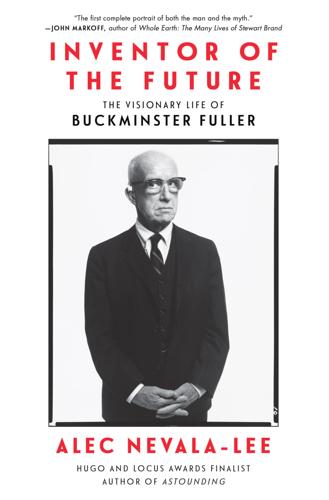
Inventor of the Future: The Visionary Life of Buckminster Fuller
by
Alec Nevala-Lee
Published 1 Aug 2022
Morgan, “Early Theories of Virus Structure,” in Conformational Proteomics of Macromolecular Architecture: Approaching the Structure of Large Molecular Assemblies and Their Mechanisms of Actions, ed. R. Holland Cheng and Lena Hammar (Singapore: World Scientific, 2004), 25. “Some things never get out of date”: Condensed from transcript of the Kitchen Debate, https://watergate.info/1959/06/24/kitchen-debate-nixon-khrushchev.html (accessed January 2021). twelve cultural representatives: Roscoe Drummond, “US Plans Show in Moscow,” Decatur (IL) Daily Review, May 29, 1959. “a lot of bows”: Don Richter, quoted in Wong, 415n506. “You see, dear boy”: Blake, No Place Like Utopia, 246.
…
McHale informed Fuller, who saw Klug and Finch in London, and the meeting set a series of events in motion that would result in a major breakthrough. On July 25 the American National Exhibition opened to the public. Khrushchev and Vice President Richard Nixon cut the ribbon at the dome, which they entered to watch an innovative film by the Eameses, Glimpses of the U.S.A. At a model home across the park, they engaged in the famed “Kitchen Debate,” where Khrushchev objected to Nixon’s claim that Americans liked to upgrade their houses after twenty years: “Some things never get out of date. Furnishings, perhaps. But not houses.” Two days later, Fuller arrived for his triumphant week in Moscow, serving as one of twelve cultural representatives, along with poet Carl Sandburg and photographer Edward Steichen.
…
H., 463 Jordan, June, 329–330 Joyce, James, 156, 397 Jumsai, Sumet, 403 Kahlo, Frida, 168 Kahn, Albert, 258 Kahn, Ely Jacques, 509n117 Kahn, Lloyd, 10, 367–369, 378–379, 410, 472 Kahn, Louis I., 188, 260, 392, 398 Kahn, Robert D., 388 Kaiser, Henry J., 182–183, 187, 284–285, 288, 291, 440 Kaiser, Neva, 382, 411, 415–416, 441–442 Kaiser Aluminum, 283–284 Kaiser domes, 550–551n285 Kaliczak, Janek, 7 Kanter, Jonathan, 369, 378 Kay, Alan, 6 Keck, George Fred, 116, 152 Kelly-Springfield Motor Truck Company, 72–73, 74–75 Kenison, Alphonse, 214 Kennedy, Caroline, 437 Kennedy, Margaret, 128 Kenner, Hugh, 157, 389–390, 391, 393, 467, 492n35 Kent State shootings, 372 Kepes, György, 452 Kesey, Ken, 351 Khrushchev, Nikita, 298–299, 301, 303, 336 Kibbutz Kfar Menachem project, 574n364 Kiesler, Frederick, 129 Kiewitt, Gustel, 318 King, Alexander, 170 King, Andy, 28, 30–31, 86, 89, 91 King, George J., 276 King, MacGregor, 28, 30–31 King, Martin Luther, Jr., 433 King, Rockwell, 27, 29, 30 Kinzie, John, 492n35 Kirkwood conference, 436–437 Kirschenbaum, Bernie, 273, 304 Kirstein, Lincoln, 116 “Kitchen Debate,” 301 Kitrick, Chris, 428 Kitty Foyle (Morley), 173 Kiyosaki, Robert, 437 Klaus, Dale, 329 Kleenex House, 271 Klopp, Kenneth “Hap,” 408 Klug, Aaron, 301, 317, 461 Klutznick, Philip, 415 Knoxville World’s Fair, 441 Koike, Hideo, 315 Korzybski, Alfred, 116, 242, 296 Kottke, Daniel, 2, 3 Krehbiel Plastic Products, 196 Kronprinzessin Cecilie, 48 Kroto, Harold W., 458–466 Kroto, Margaret, 458 Kubrick, Stanley, 419 Kuhns, William, 475 Kuromiya, Kiyoshi, 433–434, 445, 448, 475 Kwinter, Sanford, 488n16 Kyklops II (Olson), 243 La Guardia, Fiorello H., 74 Laban, Rudolf, 231 labor, students for, 10 Lacey, Cynthia (later Floyd) Anne and, 194–195, 204–205 chemical elements chart and, 212fig contributions from, 191–192 dwelling machine and, 198–199 Eames and, 220 Einstein letter and, 221 end of relationship with, 215–216 on finances, 212 geodesic dome and, 226 later interactions with, 183–184, 398, 432, 441 “Motion Economics” and, 186 Mount Kisco project and, 213 Pentagon meeting and, 236 photographs of, 199fig, 216fig relationship with, 195, 196, 208–211 on Snelson, 233 Lacey, Ginnie, 208 Ladle, 523n163 Lady Anne, 117, 123 lag, concept of, 159 Lake View Hotel, 102 laminar dome, 313 Lane, Henry, 269–270, 271, 275–276 Lane, Jeff, 516n143 Lanier, Albert, 231, 232, 237 Lanier, Jaron, 6, 471 Lapham, Lewis H., 532n198 Larned, Edward, 43, 44, 83, 84, 92 Larned, William, 83, 92 Larson, Ted, 129, 209 laser supersonic cluster beam apparatus, 459–460 laundry, 110 Le Corbusier, 23, 104–105, 107, 133, 137, 138fig, 237 Le Petit Gourmet restaurant, 114 LeBrun, Marc, 4 Lehman, Herbert H., 189 Lehr, Mira, 363 Lehr, Richard A., 283, 294 Lennon, John, 359 Leonardo da Vinci, 80, 177, 255 LeSourd, Homer, 34 Lessiovski, Victor, 335 Let’s Make the World Work.

The New Urban Crisis: How Our Cities Are Increasing Inequality, Deepening Segregation, and Failing the Middle Class?and What We Can Do About It
by
Richard Florida
Published 9 May 2016
Shortly before our move, Soviet Premier Nikita Khrushchev and Vice President Richard Nixon had met in a brand-new, fully furnished kitchen of a model home. Although it looked like one that could be in any suburb in America, the home was built in Moscow’s Sokolniki Park as part of a cultural exchange program. On July 24, 1959, while television cameras rolled, the two world leaders held an impromptu “kitchen debate.” “Any steel worker could buy this house,” Nixon pointed out.1 “They earn $3 an hour. This house costs about $100 a month to buy on a contract running 25 to 30 years.” “In Russia, all you have to do to get a house is to be born in the Soviet Union,” Khrushchev fired back. The subject soon shifted to global politics and nuclear weapons, but Nixon’s words, no less than the house itself, vividly encapsulated the postwar American Dream: a private home, complete with a television set, dishwasher, clothes washer and dryer, and a car or two in the driveway, all accessible to members of the working class like my parents.
…
Plurality service-class tracts are negatively correlated with average income (–0.49) and the share of adults who are college graduates (–0.45). Plurality working-class tracts are also negatively correlated with average income (–0.56) and the share of adults who are college graduates (–0.78). CHAPTER 8: SUBURBAN CRISIS 1. Dis, “The Nixon-Khrushchev ‘Kitchen Debate,’” Everything2, April 26, 2000, http://everything2.com/title/The+Nixon-Khrushchev+%2522Kitchen+Debate%2522. 2. On dead malls, see Nelson D. Schwartz, “The Economics (and Nostalgia) of Dead Malls,” New York Times, January 3, 2015, www.nytimes.com/2015/01/04/business/the-economics-and-nostalgia-of-dead-malls.html.
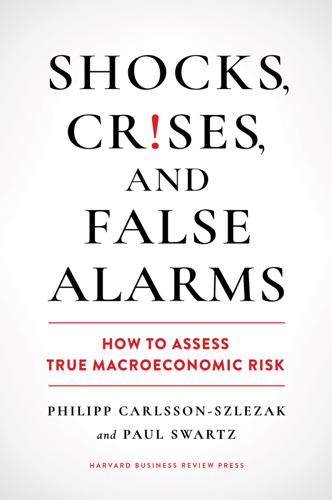
Shocks, Crises, and False Alarms: How to Assess True Macroeconomic Risk
by
Philipp Carlsson-Szlezak
and
Paul Swartz
Published 8 Jul 2024
In the military sphere, the so-called missile gap underscored politically potent fears of Soviet superiority. In the sphere of innovation and technology, the Sputnik satellite had the same effect. And even in the realm of economic prosperity, the competition seemed far from decided. Three years after that “bury you” comment, in 1959, Khrushchev took on Vice President Richard Nixon in the celebrated Kitchen Debate. Standing in a model of a home that formed part of a US cultural exhibit in Moscow, Khrushchev dismissed the display of newfangled domestic appliances and gadgetry as frivolous, rather than as signs of prosperity, and declared that the Soviet Union would soon match and then surpass the West. Of course, that was not what happened.
…
See information and communication technology (ICT) indexes, geopolitical stress and risk, 211–212 India, 231, 238 Indonesia, 123 inertia, 152–153 infections, human deaths from, 36–37 inflation 1940s vs. 1970s, 139–141 breaking the regime in, 137–148 cyclical, and debt levels, 172–174 cyclical, risk assessment for, 149–158, 159f dollar death and, 232–233 evaluating the future of, 157–158 expectations and, 140–141, 143, 143f the Fed put and, 129–131, 130f future of, 247–249 in good macro, 3–4 interest rates and, 161–163, 162f monetarism on, 21–22, 151–152, 152f monetary policy and, 155–157, 156f, 157f move to upward bias in, 153–155 policy-induced recessions and, 38–40 postpandemic, 5–6, 141–144, 142f predictions on cyclical, 150–153, 150f prioritized over growth, 129–131, 130f regime break causes, 146–147 regime insurance, 144–146 structurally anchored, 39 tightness and, 253–254 trade and, 226–227 Ukraine War and, 213–214 upwardly biased cyclical, 133, 148, 149–158, 247–249 Inflation Reduction Act, 132 information and communication technology (ICT), 96–98, 97f innovation, product, 81, 82–84, 89 institutional linkages, of geopolitical shocks, 213–214, 218 intellectual property, 62 interest rates, 29f bubbles and, 183 capital allocation and, 167–168 deficits and, 175 drivers of, 163–164 in good macro, 3–4 high and volatile, 162f, 163, 166, 166f higher but healthy, 159–168, 164f inflation regime and, 137–138, 138f Japanification of, 165–166 low and depressed, 162f, 163, 166, 166f lower but healthy, 162, 162f, 164f, 165–166 mapping regimes in, 161–163, 162f real, over time, 159, 160f reserve-currency status and, 236, 238 volatility in, 167–168 investments bubbles and, 183 capital growth and, 61–62, 62f Covid pandemic and, 7 green, 189 interest rates and, 167 net, 61–62 real recession risk and, 38 recoveries and, 47–48 stimulus and, 123–124 strategic, demand for, 245 in technology, growth and, 79–81, 80f, 93, 93f trade and, 226 upward inflation bias and, 154–155 Iraq War, 201, 203, 213 Ishihara, Shintaro, 73 Japan debt in, 171 gravity of growth in, 68, 74f magical growth models on, 68, 72–74, 74f Japanification, 165–166 Kennan, George, 207–208, 209, 210 Kennedy, John F., 108 Keynes, John Maynard, 23, 108, 199 Khrushchev, Nikita, 71–72 Kitchen Debate, 72 Korea, 68, 124 Krugman, Paul, 73 labor markets bubbles and, 189–190 financial crises and, 249 future of, 245–247 growth and, 57–60, 60f, 68–70, 69f inflation and, 153, 154, 155–157, 156f, 157f manufacturing and, 83–84 productivity growth and, 92–95, 93f recoveries and, 47–48 technology adoption and, 91–92, 101–102 technology and cost cutting in, 81–82, 82f, 84f technology unemployment and, 92, 99–101, 102, 245–246 labor participation rate, 60, 62f Lehman Brothers, 121 liquidity problems, 48–49, 48f L-shaped recoveries, 46–47, 47f, 50 Lyft, 79–80 macroeconomic risks assessing, 4–5, 17–30 compared with human death risk, 36–37 cyclical (See cyclical risks) doom-mongering about, 23–27 economic eclecticism and, 27–30, 29f geopolitical, 14, 207–218 judgment in evaluating, 7–11 as narratives, 8–10, 18 policy recessions and, 38–40 macroeconomics, 7, 101–102, 202 economic eclecticism and, 10–11, 27 models in, track record of, 8–10, 20–23 as narratives, 8–10 weaknesses of, 17–18 magical growth models, 67–77 China and, 74–76, 75f Japan and, 72–74, 74f Soviet Union and, 71–72 stages of, 70–71 manufacturing labor costs and technology in, 83–84, 84f prices in, 85–88, 85f, 86f market offsets, 128 market rejection, 120, 122–124, 125 master-model mentality (MMM), 8–10, 17, 20–23, 255 McNamara, Robert, 21 media, doom and gloom in, 10, 24–25, 178–179 Mexico, currency crisis of 1995, 123 mindsets, 8, 18 history-is-destiny, 196, 197 history-is-history, 196–201, 203–205 Mississippi stock bubble, 182 MMM.

Red Plenty
by
Francis Spufford
Published 1 Jan 2007
Helen Szamuely (London: Bantam, 1989) and G.I.Khanin, ‘1950s: The Triumph of the Soviet Economy’, Europe– Asia Studies vol. 55 no. 8 (December 2003), pp. 1187–1212; for the way in which the 1950s and 1960s saw the successful fulfilment of promises made in the 1930s, see Fitzpatrick, Everyday Stalinism, pp. 67–114. 3 The Soviet economy had grown at 6%, 7%, 8%: for the vexed question of Soviet growth rates, see below, introduction to part II. I have chosen here for Khrushchev, as seems likely, to believe the official Soviet figures, which naturally gave the highest rate. 4 Let’s compete on the merits of our washing machines: this is the famous ‘kitchen debate’. See Taubman, Khrushchev, pp. 417–18; and the coverage in the New York Times, vol. CVIII no. 37,072, 25 July 1959, pp. 1–4. 5 Without me, they’ll drown you like kittens: for this prophecy of Stalin’s, see Taubman, Khrushchev, p. 331. For the pipe-emptying and forehead-tapping episodes, see pp. 167–8 and 230. 6 For the time being, you are richer than us: see Taubman, Khrushchev, p. 427. 7 If I’d known there would be pictures like these: see Taubman, Khrushchev, p. 426. 8 Were you in the war, Mr Lodge?
…
Helen Szamuely (London: Bantam, 1989) and G.I.Khanin, ‘1950s: The Triumph of the Soviet Economy’, Europe– Asia Studies vol. 55 no. 8 (December 2003), pp. 1187–1212; for the way in which the 1950s and 1960s saw the successful fulfilment of promises made in the 1930s, see Fitzpatrick, Everyday Stalinism, pp. 67–114. 3 The Soviet economy had grown at 6%, 7%, 8%: for the vexed question of Soviet growth rates, see below, introduction to part II. I have chosen here for Khrushchev, as seems likely, to believe the official Soviet figures, which naturally gave the highest rate. 4 Let’s compete on the merits of our washing machines: this is the famous ‘kitchen debate’. See Taubman, Khrushchev, pp. 417–18; and the coverage in the New York Times, vol. CVIII no. 37,072, 25 July 1959, pp. 1–4. 5 Without me, they’ll drown you like kittens: for this prophecy of Stalin’s, see Taubman, Khrushchev, p. 331. For the pipe-emptying and forehead-tapping episodes, see pp. 167–8 and 230. 6 For the time being, you are richer than us: see Taubman, Khrushchev, p. 427. 7 If I’d known there would be pictures like these: see Taubman, Khrushchev, p. 426. 8 Were you in the war, Mr Lodge?
…
Ziegelbaum, Jet Propulsion Laboratory/Astronautics Information Translation 22, 1 May 1961 (JPL, Calfornia Institute of Techology) – Gagarin’s first flight Life Magazine vol. 47 no. 6 (10 August 1959), pp. 28–35 – pictures of the American exhibition Literaturnaya Gazeta no. 27 (1969), p. 10 – trial of deputy director of pig farm New York Times vol. 108 no. 37,072 (25 July 1959), pp. 1–4 – Khrushchev and Nixon’s ‘kitchen debate’ at the American exhibition Time Magazine, 12 February 1965, ‘Borrowing from the Capitalists’ – Liberman and economic reform Websites Banknotes http://commons.wikipedia.org/wiki/Category: Banknotes_of_the_Soviet_ Union,_1961 Russian cars www.autosoviet.com Alexander [Aleksandr] Galich www.galichclub.narod. ru/biog. htm The Jewish Women’s Archive http://jwa.org/encyclopedia/article/berg-raissa-lvovna Soviet literature www.sovlit.com Michael Swanwick’s blog http://floggingbabel.blogspot.com/2008/02/khrushchev-isnt-he-russian-novelist. html [sic] Unrealised Moscow http://www.muar.ru/ve/2003/moscow/index_e. htm Film and television Adam Curtis, dir., ‘The Engineers’ Plot’ (TV documentary), programme 1 of Pandora’s Box, BBC TV 1992 Georgii Daniela, dir., Ya shagayu po Moskve (‘I Walk around Moscow’), 1964 Marlen Khutsiev, dir., Zastava Ilicha/Mne Dvadtsat’ Let (‘Ilich’s Gate’/‘I Am Twenty’), 1961 released 1965 Marlen Khutsiev, dir., Iyulskii Dozhd’ (‘July Rain’), 1967 Mikhail Romm, dir., Devyat’ dnei odnogo goda (‘Nine Days in One Year’), 1962 About the Author Francis Spufford, a former Sunday Times Young Writer of the Year (1997), has edited two acclaimed literary anthologies and a collection of essays about the history of technology.
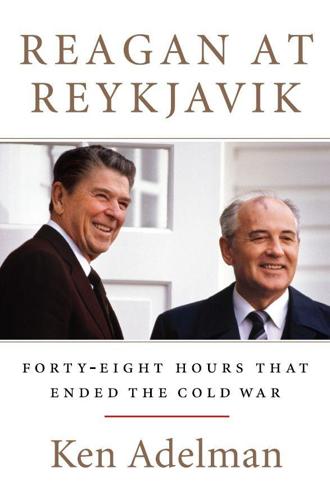
Reagan at Reykjavik: Forty-Eight Hours That Ended the Cold War
by
Ken Adelman
Published 5 May 2014
That deceit gave the Soviets an edge that lasted right up to the present. “In fact, we are still behind.” Once embarked on this roll of Soviet duplicity, Ronald Reagan proved unstoppable. Consequently, at Reykjavik on that Sunday morning came the most remarkable debate over American and Soviet social and political systems, even exceeding the Nixon-Khrushchev “kitchen debate” in the summer of 1959. The president identified the basic problem: “Each side has mistrusted the other.” But each side has not been equally at fault. “The evidence is all on our side.” The mistrust started with Lenin. With growing unease at where this latest Reagan stream of consciousness was taking them, Gorbachev tried to divert it with a wisecrack about Reagan’s previous talk of Karl Marx.
…
Fix-It”), 123, 224 The Meetings of President Reagan and General Secretary Gorbachev, Reykjavik (briefing book), 11–13 Momper, Walter, 277 Mondale, Walter, 67 Montblanc pen, 294, 361n294 Morris, Edmund, 322–23 Moscow summit of 1988 agreement to, 73, 253 arrival of Reagans, 256–59 discussions and public activities, 260–61, 262–65 human rights objectives, 263 press coverage, 259–60 Reagan objectives, 265 Reagan “walkabout,” 261–62 Moynihan, Daniel Patrick, 202 MS Baltika (ship), 47 MS George Ots (ship), 47, 91, 187 Muggeridge, Malcolm, 341 MV Sirius (ship), 47 National Security Council (NSC) Adelman attendance, 20 appointment of Carlucci, 227 appointment of Powell, 243 arms control meetings, 68 post-Reykjavik review, 217–20 at Reykjavik, 34, 120, 163 Newton, Wayne, 339 New York Times, 17, 20, 32, 49, 66–67, 114, 210, 215, 223, 257, 262, 271, 276, 308, 335–36 Nicaragua, 224–27, 232, 241–42 Nitze, Paul, 96, 101, 114–24, 129, 131, 173, 231, 235, 308, 341 Nixon, Richard/Nixon administration arms control talks, 59–60, 73, 175 assessment of Reykjavik, 3, 297–98 Khrushchev “kitchen debate,” 143 Kissinger role in, 18 political resurrection, 27 relations with China, 260 relations with Soviets, 26, 119 SALT I talks, 116–17 visit to Iceland, 42 visit to Moscow, 258 Nobel Peace Prize Gorbachev (1990), 327–28 Kissinger–Le Duc Tho (1973), 327 Mandela–de Klerk (1993), 327 Reagan considered for, 156, 327 Sakharov (1975), 264 Non-Proliferation Treaty of 1968, 59 North, Oliver, 194, 224–25 North Korea, 59, 131, 155, 307, 311–12 nuclear testing, 56–57, 130, 143–44, 255–56, 303, 306–7 Nunn, Sam, 201–2, 308 Obama, Barack, 120, 250, 303–4, 309 Oberdorfer, Don, 2, 242, 314, 321 O’Connor, Sandra Day, 338 October 9 (Thursday) Reagan arrival, 34, 41–44 Reagan briefing book, 11–13 White House departure, 7–9 October 10 (Friday) Gorbachev arrival, 46–47 Gorbachev visit to Bessastidir, 48 Reagan visit to Bessastidir, 44–45 U.S. media reporting, 51 October 11 (Saturday a.m.)
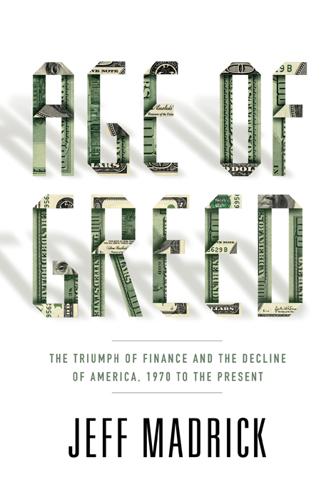
Age of Greed: The Triumph of Finance and the Decline of America, 1970 to the Present
by
Jeff Madrick
Published 11 Jun 2012
He was stoned by angry crowds in South America, gaining him headlines at home and winning him more sympathy as America’s defender. Late in his second term, he again made sensational headlines for a televised impromptu discussion in 1959 with the Russian leader, Nikita Khrushchev. The confrontation took place in the up-to-date American model home built for an exposition in Moscow. Captured on color videotape, the “kitchen debate” showed a still young Nixon strongly defending American material plenty and holding his own against the older, experienced Soviet head of state. His critics resented his mix of opportunism and pandering, and Nixon was indeed easy to ridicule. Helen Gahagan Douglas had tagged him years earlier as Tricky Dick, and the name stuck.
…
He and Nancy had bought a lovely new house in Pacific Palisades and GE furnished it with its latest appliances. He occasionally hosted the program from the house, proud of his possessions. It is hard to imagine Richard Nixon proud of a GE refrigerator. Nixon never lived the American way of life he extolled in the kitchen debates with Khrushchev. Reagan did, and admired it. The former liberal critic was turning into a full-fledged outspoken conservative. A decade later, he wrote that he was greatly relieved he had recovered from the liberal disease. He had been, as he put it in Where’s the Rest of Me?, a “near hopeless hemophilic liberal.
…
Morgan Stanley, 1.1, 4.1, 4.2, 4.3, 13.1, 15.1, 15.2, 16.1, 16.2, 17.1, 17.2, 17.3, 17.4, 17.5, 18.1, 18.2, 19.1, 19.2, 19.3, 19.4 Morris, Edmund mortgage-backed securities (MBS), 6.1, 12.1, 12.2, 14.1, 14.2, 15.1, 16.1, 16.2, 18.1, 18.2, 18.3, 18.4, 18.5, 19.1, 19.2, 19.3, 19.4, 19.5n; see also housing prices mortgages, 1.1, 3.1, 4.1, 6.1, 9.1, 11.1, 12.1, 12.2, 12.3, 14.1, 14.2, 15.1, 15.2, 16.1, 18.1, 19.1, 19.2, 19.3, 19.4 Moynihan, Daniel Patrick, 11.1, 11.2 Mozer, Paul, 15.1, 16.1 Mozilo, Angelo, 18.1, 18.2, 18.3, 18.4, 18.5 Murdoch, Rupert, 8.1, 8.2, 8.3, 8.4 Murphy, George music industry, 8.1, 8.2, 8.3, 8.4 mutual funds, 1.1, 6.1, 6.2, 13.1, 15.1, 15.2, 15.3, 15.4, 15.5, 15.6, 16.1, 16.2, 16.3, 17.1, 17.2, 17.3, 18.1, 19.1 Nader, Ralph, 3.1, 6.1 Nasdaq, 13.1, 14.1, 15.1, 17.1, 17.2, 19.1 Nash, Jack National Association of Securities Dealers (NASD), 17.1, 17.2, 17.3 National Bureau of Economic Research, 2.1, 2.2, 14.1 National City Bank National Labor Relations Board (NLRB) National Tax Limitation Committee, prl.1 natural gas, 17.1, 17.2 natural rate theory, 2.1, 2.2 Nazi Germany, 2.1, 7.1, 15.1 NBC, 5.1, 8.1, 8.2, 12.1, 12.2, 12.3, 12.4 negative amortization Netscape, 17.1, 17.2, 18.1 New Century, 18.1, 18.2, 18.3, 19.1 New Deal, x, itr.1, prl.1, prl.2, 1.1, 1.2, 1.3, 1.4, 1.5, 2.1, 2.2, 2.3, 3.1, 6.1, 6.2, 6.3, 7.1, 7.2, 9.1, 14.1, 16.1, 16.2 New Economic Policy New Economics, 3.1, 3.2, 19.1 New Economy, 14.1, 14.2, 15.1, 17.1, 17.2, 18.1 newspapers, 2.1, 8.1, 8.2, 8.3, 10.1 Newton, Isaac New York, N.Y., 1.1, 1.2, 1.3, 6.1, 6.2, 8.1, 14.1, 19.1 New York State, 12.1, 17.1 New York Stock Exchange (NYSE), 1.1, 6.1, 13.1, 16.1, 16.2, 16.3, 17.1, 17.2, 18.1 New York Times, 6.1, 6.2, 8.1, 8.2, 9.1, 10.1, 14.1, 16.1, 16.2, 17.1, 19.1 Niarchos, Stavros Niebuhr, Reinhold Niskanen, William Nixon, Frank, 3.1, 3.2 Nixon, Hannah Milhous, 3.1, 3.2 Nixon, Richard M., 2.1, 3.1, 3.2; anticommunism of, prl.1, 3.3, 3.4; background of, 3.5; congressional campaign of (1946), 3.6; economic policies of, 1.1, 1.2, 2.2, 2.3, 3.7, 4.1, 6.1, 9.1, 9.2, 9.3, 9.4, 10.1, 11.1, 11.2, 11.3, 14.1; foreign policy of, 3.8, 3.9, 3.10, 3.11; gubernatorial campaign of (1962), prl.1, 3.12, 7.1; inflation policies of, 3.13, 3.14, 3.15, 11.4; “kitchen debate” of, 3.16, 7.2; New Economic Policy of, 3.17; as president, prl.1, prl.2, 3.18, 16.1; presidential campaign of (1960), prl.1, prl.2, 3.19, 7.3, 10.2; presidential campaign of (1968), 3.20; presidential campaign of (1972), 2.4, 3.21, 3.22, 3.23, 3.24; Reagan compared with, 7.4, 7.5, 7.6, 7.7; as Republican, prl.1, prl.2, 3.25, 3.26; reputation of, 3.27, 3.28, 3.29; resignation of, 3.30, 3.31, 7.8, 14.2; Senate campaign of (1950), 3.32, 7.9; vice-presidential campaign of (1952), 3.33; vice-presidential campaign of (1956), 3.34; Vietnam policy of, 3.35, 3.36, 3.37, 3.38, 3.39, 3.40; Watergate scandal and, 3.41, 3.42, 3.43, 3.44, 3.45, 9.5, 10.3, 14.3 Nobel Prize, 2.1, 2.2, 2.3, 7.1, 9.1, 14.1, 15.1, 15.2 Noryl, 12.1, 12.2 NOW (negotiable order of withdrawal) accounts nuclear power, 2.1, 5.1, 5.2 Obama, Barack, 2.1, 19.1, 19.2, 19.3, 19.4 Occupational Safety and Health Administration (OSHA), prl.1, 3.1, 11.1 Office of Management and Budget (OMB) Office of the Comptroller of the Currency oil industry, 1.1, 2.1, 3.1, 4.1, 5.1, 5.2, 5.3, 6.1, 8.1, 8.2, 9.1, 9.2, 13.1, 15.1, 17.1, 17.2 oil prices, 2.1, 3.1, 3.2, 4.1, 6.1, 6.2, 6.3, 9.1, 9.2, 12.1, 14.1, 15.1, 15.2, 15.3, 19.1, 19.2 Okun, Arthur Olson, John Onassis, Aristotle O’Neal, Stan, 19.1, 19.2, 19.3, 19.4 “open society,” 253–4 Open Society Institute Oppenheimer, J.
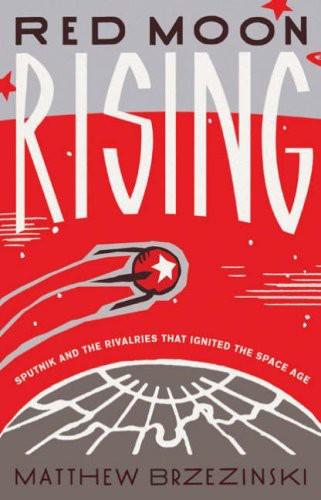
Red Moon Rising
by
Matthew Brzezinski
Published 2 Jan 2007
Visiting a mockup of an American kitchen displayed at the fair, the two leaders launched into an impromptu argument over missiles that ended with the red-faced first secretary jabbing a pudgy finger in the vice president’s chest and growling: “You want to threaten? We will answer threats with threats.” Nixon’s eventual opponent, John F. Kennedy, would make much of the unstatesmanlike buffoonery of the “kitchen debate,” and he would owe a large debt to the continued fallout from Sputnik and the missile gap for his electoral victory the following year. But it would be Nixon who would preside over the White House when Kennedy’s pledge to put a man on the moon was finally realized in 1969. Some would say this was fitting since he had advocated, as vice president, for Ike to shoot for the moon.
…
T., 51 Kennedy, John F., 53–54, 270–71, 275 Kennedy, Joseph P., 277 KGB (formerly NKVD), 18, 27, 29, 32, 62, 64, 67, 75, 109, 111–12, 123, 145, 152, 199, 200 Khrushchev, Nikita apartments built by, 19–20 arms race and Soviet economy and, 36–39 background and education of, 20–23 coup attempt and, 109–13, 190 Cuba and, 101, 270–72 de-Stalinization and, 41–42 Explorer launch and, 268 fall of, 271–72 fear of nuclear attack and, 23–26 Korolev honored by, 203–4 legacy of, 274–75 military spending and, 54, 191–92 Nixon and “kitchen debate,” 275 OKB-1 and, 278 R-7 development and, 21–23, 26–30, 34–44, 54, 56, 64–65, 71–72, 98, 101, 128–29, 191–92, 204–6, 269 R-16 development and, 246–47, 271 rise to power of, 18–20, 28, 41–42 satellite program and, 42–44, 114, 143–44, 148–50 secret speech of, on Stalin’s crimes, 18, 30–33, 41–42, 60, 62–64, 73, 75, 93–94, 128 Sputnik I and, 160, 180, 184, 187–89, 195–96, 199–206 Sputnik II and, 209–12, 216–17, 245 summit of 1955 and, 24 U-2 and, 124–27, 129–31 uprisings of 1956 and, 62–64, 73–77 Vanguard failure and, 241, 257 “we will bury you” speech of, 109–10 Zhukov ouster by, 188–95 Khrushchev, Sergei career of, 100–101, 272 father’s political life and, 41, 111, 192, 194, 195 R-7 and, 18, 20–22, 27–29, 34, 36, 39–40, 42–44, 98 Sputnik and, 195–96, 203, 205 U-2 and, 125, 130–31 Killian, James, 53, 93, 135, 218–19, 223–24, 243, 249–50 Killian report, 53, 117 Kim Il Sung, 88–89 King, Martin Luther, Jr., 137 Kirichenko, Aleksei, 18, 27–38, 195 Knerr, Hugh, 9 Kodak company, 116 Kolyma mines, 66, 100 Korean War, 24, 47, 80, 89–90, 183 Korolev, Sergei, 186, 195, 220, 261, 266 background and early career of, 103–9 death and legacy of, 273–75 dog in space with Sputnik II and, 209–12, 217 honors awarded to, 203–4 illness of, after Sputnik II and doubts about R-7, 245–47 Khruschev okays projects of, 27–29, 33–36, 39–44, 56 known only as Chief Designer, 27 marries Ksenia, 106–8 marries Nina, 99–100 Nobel Prize denied to, 203 orbital velocity problem and, 262 overselling of R-7 and Glushkov cause problems for, 64–72 R-7 delays and, 95–103 R-7 first successful flight and, 113–14, 129 R-7 loading problem and, vs.
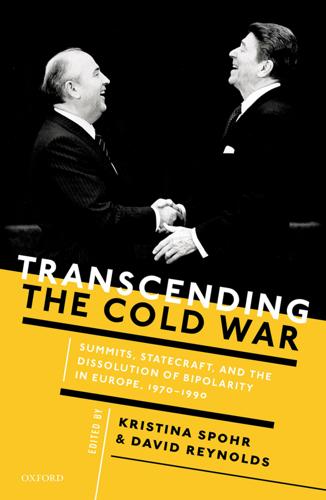
Transcending the Cold War: Summits, Statecraft, and the Dissolution of Bipolarity in Europe, 1970–1990
by
Kristina Spohr
and
David Reynolds
Published 24 Aug 2016
In fact, Nixon had made his political name as an anti-communist crusader, rising to prominence in Congress on the back of his campaign to prove that Alger Hiss, a State Department official under suspicion of spying for the Soviet Union, had lied about his activities. Dwight D. Eisenhower selected Nixon as his running mate in the 1952 presidential election in order to reassure Republican conservatives. Nixon’s 1959 trip to the Soviet Union as vice president had been contentious yet politically profitable after he got into an animated ‘kitchen debate’ with Nikita Khrushchev over the relative merits of American and Soviet consumerism.2 In short, Nixon was a figure whose political trajectory had been fuelled by confrontation, not détente. Time had not entirely mellowed Nixon’s fundamental suspicion of communists in general and Russian communists in particular.
…
Without any precedent for a presidential visit to the Soviet Union, Nixon’s staff raided the itineraries and communiqués of other Western leaders for ideas, including West Germany’s Willy Brandt, Harold Wilson of Great Britain, Charles de Gaulle of France, and Pierre Trudeau of Canada. They also looked at Dwight D. Eisenhower’s aborted 1960 summit and even Nixon’s vice-presidential kitchen debate visit in 1959.30 In the end Washington agreed on a nine-day visit, with regional stops in Leningrad and Kiev. The public symbolism of each moment was choreographed to the last detail, in some cases almost absurdly. Nixon’s PR team decided that David Eisenhower, the late president’s grandson and Nixon’s son-in-law, should say goodbye to the president at Andrews Air Force Base in order to underline the fact that Nixon was ‘doing something that [President] Eisenhower was unable to do’—a point that was likely lost on most members of the American public.31 The White House’s obsession with the media caused problems in the Kremlin.
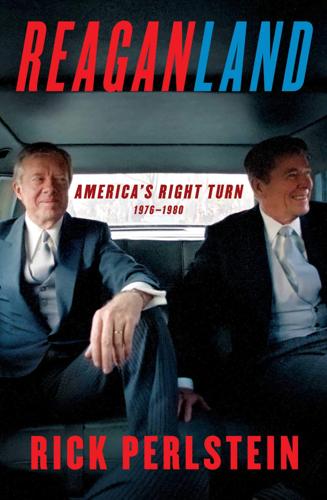
Reaganland: America's Right Turn 1976-1980
by
Rick Perlstein
Published 17 Aug 2020
His young protégé watched and learned. In 1959, Safire cleverly maneuvered the two most powerful men in the world into the “typical American home” set up at the American National Exhibition in Moscow’s Sokolniki Park by a McCrary PR client. There, Richard Nixon and Nikita Khrushchev semi-spontaneously engaged in a legendary “kitchen debate” over the relative merits of the communism and capitalism. As Safire told the story in his 1963 book, The Relations Explosion, a manual on how to manipulate public perception, Khrushchev’s security forces attempted to block a New York Times reporter from the enclosure. Safire claimed the man was there to demonstrate the refrigerator—then that a Life magazine photographer was with the manufacturer of the washing machine.
…
In April he teed off on Paul Warnke for “ideological bias” in his hiring practices; in May, he went after two State Department officials with a supposedly corrupt business connection to a TV station; in June, the target was Vice President Mondale, for supposedly installing a “gang of four” of pro-administration prosecutors in the Justice Department; none of these seeds took root with other investigators. Then, after the revelation of Pat Caddell’s ten-thousand-word political strategy memo, Safire lamented that the Carter administration believed “the way to stay in the corridors of power is to turn them into halls of mirrors.” Which, coming from the architect of the Kitchen Debate, was pretty rich. He hoped to exploit as a point of leverage Carter’s self-anointment as something better than a politician: easier, after all, to knock a man down when he’s perched on a pedestal. He hoped to prick journalists into going after Jimmy Carter in the same way they’d supposedly sabotaged Nixon or else be dismissed as Democratic hacks.
…
William Safire “William Safire, Political Columnist and Oracle of Language, Dies at 79,” NYT, September 27, 2009; Eric Alterman, Sound and Fury: The Making of the Punditocracy (New York: HarperCollins, 1992), 35; Garry Wills, “William Safire at the Top of the Heap,” New York, November 28, 1977. legendary “kitchen debate” William Safire, The Relations Explosion: A Diagram of the Coming Boom and Shakeout in Corporate Relations (New York: Macmillan, 1963). inaugural was “Pedestrian Inaugural,” NYT, January 24, 1977. “the infamous ‘Doar Plan’ ” “Rejected Counsel,” NYT, February 3, 1977. “Will Mr. Civiletti inform” “Helping the House Corruption Grand Jury,” NYT, February 28, 1977.
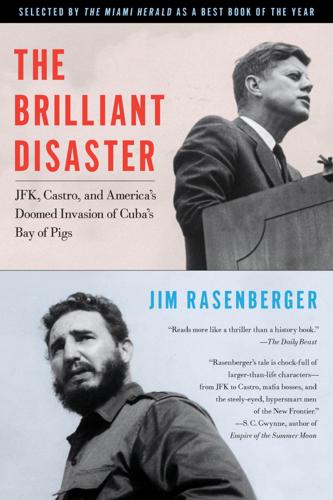
The Brilliant Disaster: JFK, Castro, and America's Doomed Invasion of Cuba's Bay of Pigs
by
Jim Rasenberger
Published 4 Apr 2011
Beyond very real and definable anxieties regarding nuclear obliteration, a vaguer insecurity seemed to grip many Americans of the 1950s. This was reflected in edgy bestsellers such as The Man in the Gray Flannel Suit and The Ugly American, in which American might, for all its obvious fecundity and influence, was portrayed as a tenuous and at some level hollow proposition. Richard Nixon’s so-called kitchen debate with Nikita Khrushchev in the summer of 1959, in which the two men squabbled about the respective merits of their nation’s kitchen appliances, would be hailed as a victory for Nixon’s debating skills and a rousing defense of American prosperity and industry, but in the end Nixon’s argument was strikingly vapid.
…
.: Castro’s 1959 visit to, 22–25 Castro’s 1960 visit to, 86–88, 89 New York Daily News, 20 New York Post, 23, 24 New York Times, 1, 3, 13, 20, 25, 30, 88, 107, 115, 166, 168, 170, 175, 196, 216, 314, 319, 320, 330, 331, 358, 379, 380, 383, 385, 390, 397 Nitze, Paul, 125, 158, 159, 198 Nixon, Julie, 317 Nixon, Richard, xv, xviii, 11–12, 385 anticommunism of, 21, 78, 94 Castro as election issue for, 51, 77, 79, 80, 90, 91–94, 95, 103 Castro’s meeting with, 19, 21–22 in covert-action planning, 50–51, 53, 55, 80 Dulles’s Kennedy briefing questioned by, 79 Dulles’s visit to, 307 Kennedy grudge of, 94, 396, 397 Kennedy’s assessment by, 381–82 at Kennedy’s inauguration, 114 Kennedy’s post-invasion meeting with, 317–18 “kitchen debate” of, 18–19 presidency of, 396–99 in presidential debates, 91–94, 396 Noel, James, 144, 295 Nolan, John E., Jr., 369–70, 371, 372, 374, 375, 376, 377, 378–79 Norstad, Lauris, 314 Obama, Barack, xix Oberdorfer, Louis, xix, 368, 370, 373, 377 O’Connell, James, 89 O’Donnell, Kenneth, 250, 281, 286, 287, 296 oil industry, 76–77 Oliva, Erneido, 228, 246, 254, 257, 258, 261, 262, 263, 267, 279, 295, 300, 301, 302, 357, 379 Opa Locka air base, 84, 120, 284, 295, 375 Operation Ajax, 44 Operation Alert, 19–20 Operation Bumpy Road, 107–8, 153 Operation Mongoose, 352, 360, 398 Operation Success, 44, 61–62, 67, 68 see also Guatemala, CIA-backed coup in Operation Trinidad, 118, 137, 138, 175, 185, 268 Operation Zapata: Acheson’s criticism of, 147 aerial reconnaissance in, 148, 171, 177, 190, 196, 207, 230, 271 air strikes critical to, 140, 148, 175, 176, 181–82, 190, 221, 222, 225, 389 air strikes curtailed in, 185, 209–10 air-strike strategy compromised in, 182 Battle of the Rotunda in, 258, 260–63 cancellation deadline for, 183, 201, 213 Castro’s knowledge of, 170–71, 185 casualties in, 85, 193, 206, 246, 262, 262n, 267, 279, 291, 292, 294, 321, 323, 323n combat in, 231, 232, 243, 244, 246, 247–49, 250–51, 252, 254–58, 259, 260–63, 267, 271, 273, 276–77, 291, 294–95, 300–302, 392 commencement of, 4–6, 186 conflicting goals for, 140, 162, 175, 189, 221 contingency plan for, 157, 389 coral as obstacle in, 230, 231, 232, 233, 237, 238 crisis response to, 269–70, 271, 272–73, 274, 277, 279–80, 282, 283–84, 285–87 diversionary landing aborted in, 191 end goal of, 228–29 evidence of U.S. involvement in, 202 final military preparations for, 4, 5–6, 157, 183–84 first air strike in, 189–96, 198, 202, 206, 207–8 first progress report in, 200–201, 203 follow-up air-strike approval questioned in, 217–18, 220–21 follow-up air strike approved in, 264 follow-up air-strike cancellation in, 211, 221, 222–24, 225–26, 233–36, 245, 247, 258, 306, 307, 332, 340, 385, 391 follow-up air strikes required in, 208, 209, 210, 229 formulation of, 138–40 intelligence lacking in, 272, 277, 279–80, 336 internal Cuban support critical to, 157, 171 internal Cuban uprisings expected in, 229, 341, 389, 392, 393 Kennedy administration’s final briefing on, 181–83, 221 Kennedy’s approval of, 216 Kennedy’s comprehension of, 166, 391, 394 Kennedy’s conflict about, 213, 390–91, 394–95 Kennedy’s denials and, 180–81, 278 Kennedy’s review of, 147, 148, 155–63, 165–66, 175 landing strategy for, 227–28, 251 Last Stand in, 300–301 miscommunication in, 290 political concerns about, 148, 149–50, 151–52, 158–59, 160, 162, 164–65, 171–73, 178–79, 218–19, 223, 234, 298–99, 395 possible remedies for canceled air strikes in, 234–35, 240–42 press coverage of, 166–67, 168–70, 175 propaganda efforts in, 239–40, 257, 264–65 Rules of Engagement for, 178, 299 ruses considered for, 165 ruse used in, 190, 194–95, 198, 202, 203, 204, 205, 216 Stevenson’s briefing on, 172–73, 198, 205 Stevenson’s denial of, xiv, 203, 204–5, 216–17 Stevenson’s protest against, 218–19, 220, 221 strategic concerns about, 141, 160, 162, 175–76 U.S. deniability in, 152–53, 160, 165, 175, 179, 189, 195, 216, 221, 241, 327 U.S. military intervention debated for, 283–84, 392, 393 U.S. military intervention prohibited in, 184, 229, 265–66, 271, 273, 274, 277, 282, 306, 333, 393 U.S. military support assumed in, 209, 210, 229 U.S.
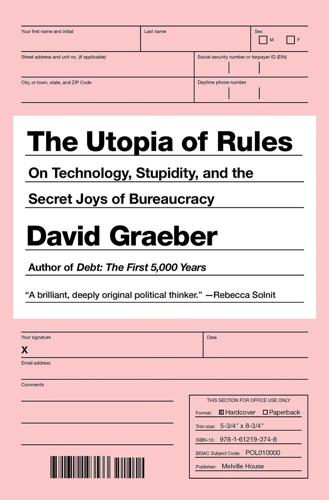
Bureaucracy
by
David Graeber
Published 3 Feb 2015
One was a conscious policy: the Cold War saw frenetic efforts by U.S. industrial planners91 to find ways to apply existing technologies to consumer purposes, to create an optimistic sense of burgeoning prosperity and guaranteed progress that, it was hoped, would undercut the appeal of radical working-class politics. The famous 1959 “kitchen debate” between Richard Nixon and Nikita Khrushchev made the politics quite explicit: “your communist ‘worker’s state’ may have beat us into outer space,” Nixon effectively argued, “but it’s capitalism that creates technology like washing machines that actually improve the lives of the toiling masses.”
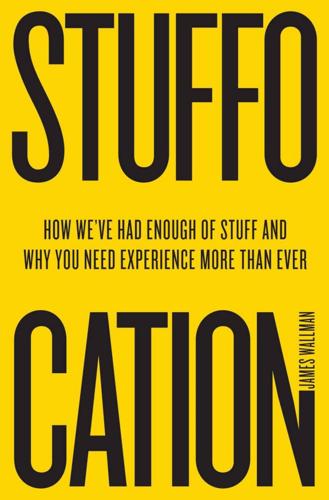
Stuffocation
by
James Wallman
Published 6 Dec 2013
They decided to do so by creating a real-life suburban home, the sort of house Richie Cunningham lived in, in the television series Happy Days. It was in this home’s kitchen that Nixon met Khrushchev. If you look up the CIA transcript it reads like a comedy sketch where the director has asked one to be reasonable, and the other to act the defensive, blustering ruddy-cheeked oaf. Can you tell who was given which directions? The Kitchen Debate - transcript 24 July 1959 [Both men enter kitchen in the American exhibit.] Nixon: I want to show you this kitchen. It is like those of our houses in California. [Nixon points to dishwasher.] Khrushchev: We have such things. Nixon: This is our newest model. This is the kind which is built in thousands of units for direct installations in the houses.
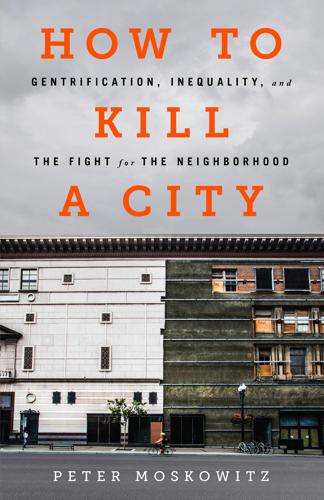
How to Kill a City: The Real Story of Gentrification
by
Peter Moskowitz
Published 7 Mar 2017
After the war, suburban culture became a weapon in the Cold War fight against the Soviet Union. In 1959, in an iconic moment of television, Vice President Richard Nixon debated the merits of American culture with Soviet premier Nikita Khrushchev in front of a model American home decked out with every modern appliance available, in what came to be known as the “kitchen debates.” These material goods—the toaster and the television, the canned foods and Pepsi products—Nixon argued, were the best proof yet that Americans were living a lifestyle superior to that of the communist Russians. Hollywood got in on the propaganda too. In 1961’s Bachelor in Paradise, Bob Hope plays a critical essayist who goes to a California subdivision to write an analysis of suburban life, only to fall in love with a real estate agent and move there.

Bricks & Mortals: Ten Great Buildings and the People They Made
by
Tom Wilkinson
Published 21 Jul 2014
The blood-soaked Stalin era weighed heavily on his conscience, for a start, and it seems he genuinely wanted to make amends by delivering the happiness that communism had always held out to its adherents. But this was as much a response to international as domestic politics. In 1959 the world’s two superpowers had locked horns on one of the most bizarre battlegrounds in history, a show kitchen at the American National Exhibition in Moscow. The famous ‘kitchen debate’ that took place there between Khrushchev and Vice-President Nixon was a pivotal moment in the Cold War, when the Fordist American dream of mass consumerism went head to head with the Soviet ideal of Red Plenty. The American show kitchen was consciously intended as propaganda by white goods – or rather pastel pink and canary-yellow goods, for in true late Fordist style the units and appliances supplied by General Electric were available in a wide variety of colours.

Empire of Things: How We Became a World of Consumers, From the Fifteenth Century to the Twenty-First
by
Frank Trentmann
Published 1 Dec 2015
Incapable of delivering on big white goods, the GDR in 1959 shifted its focus to the ‘thousand little things needed in daily life’ like screws, sewing needles and spare parts. Delegations travelled to Sweden and West Berlin to study dry cleaning and DIY.178 If socialist consumers wanted things, they would need to learn to repair them. The material race, then, was already in full swing when vice-president Nixon sparred with Khrushchev in the famous kitchen debate at the international exhibition in Moscow on 24 July 1959. The fully equipped six-room ranch house cost $14,000. Any American worker could afford that, Nixon challenged Khrushchev. The Soviets had sent Sputnik into space two years earlier and the Soviet leader was not easily shaken: in the Soviet Union all new houses had this kind of equipment, he hit back.
…
S. 3, 151–2 jewellery 41, 47, 48, 123, 138, 143, 146, 206, 228, 362, 381, 434, 511, 527 Jews 86, 290, 598, 600, 615; department stores owned by 196, 300 Jiangnan 44, 46 Jihad 616, 618–19 Jin Ping Mei (The Plum in the Golden Vase ) 48, 51 Jingdezhen 44, 88 Johannesburg 252 Johansen, Hans-Peter 337 John Paul II 606 Johnson, Lyndon B. 304, 501 jollyboys 60 jukeboxes 311–12 Kaffee-Messmer 172 Kahneman, Daniel 453 kakusa shakai 371 Kallen, Horace 289 Kambli, Konrad 118 Kames, Henry Home, Lord 102 Kant, Immanuel 95 Karo women 142 Karstadt (department store) 199 Katona, George 340, 342 Keep Sunday Special Campaign 479 Kekkonen, Urho 419 Kelley, Florence 156 Kellogg’s 517 Kennedy, John F. 550–51, 552; Consumer Bill of Rights (1962) 387, 550–51, 553 Kent 61, 76 Kenya 573, 591, 594 Kerala 365, 379–80, 381 Keynes, John Maynard 284–5, 420, 445, 449 Keynesianism 427–8 khadi 297–8 khat 80, 168 Khatris of Benares 146 Khmer Rouge 680 Khomeini, Ruhollah 616 Khrushchev, Nikita Sergeyevich 327, 329–30 kimono 358 kinetoscopes 212 King, Gregory 59 King, Martin Luther 324–5 Kipling, Rudyard 124 Kirov works 294–5 kitchens 14, 189, 222, 240, 242, 249–51; first electric kitchen 249; Frankfurt Kitchen 249–50; functionalist 249–50, 270; Moscow exhibition kitchen debate 329; in Shanghai 249, 250; shared 225; as social spaces 674–5; standardized, built-in 240, 250; toilets in 189; working class 270 Kleenex 631 kleptomaniacs 197 Klopp, Jürgen 563 knitting frame 59 Knonau, Gerold Meyer von 117 Knossos 626 Knox Hat Company 494–5 Kocher, Emil Theodor 118 Kohler, Walter 240 Kohler Company 240 kola nuts/extract 80, 168 Kolkata (formerly Calcutta) 375 Kolonialwarenladen 164 Kombinat Haushaltsgeräte 336 Kon Wajiro 359, 378 Korea: Korean War 307, 504, 542; North 607; South see South Korea Kozintsev, Grigori 292 Kracauer, Siegfried 211–12, 215 Kritischer Konsum 576 Krueger, Alan 453 Krupp, Alfred 523 Krupp steel maker 166, 523 Kyoto 358 Kyrk, Hazel 239, 289 La Pradelle, Michele de 583 La Roque, Jean de 87, 90, 92 labelling 6, 68–9, 156, 565–6, 570, 577 see also branding labour and work: absenteeism 471, 529, 530, 531; balance between work and leisure 443–55, 446; children’s 133, 156, 287, 485, 490; consumption as part of labour exchange 59–60; department stores and the creation of new work 196; DIY 260–61, 262, 292; and early deprivation 309; factory labour/labourers 79, 166, 210, 214, 239, 260, 294, 337; free labour 91, 122, 129; housework see housework; and idleness see idleness; ‘industrious revolution’ 74–5; industry and the wage worker 1; the labourer as a consumer 117; Marx and the exploitation of 113; migrant labour/workers 58, 64, 334, 383, 512 see also remittances, migrant worker; non-wage benefits see company leisure activities; company services, and corporate-led consumption; holidays: paid; part-time 480, 481; polarization of work and leisure 443, 455, 468–73; principle of equivalence of work and play 503; Puritan work ethic 455; and remittances see remittances, migrant worker; slave labour see slavery/slaves; as source of wealth 449; specialization/division 24, 54, 110; sweated labour/goods and sweatshops 128, 155, 156, 184, 355, 567, 578; travelling/commuting to work 14, 200, 340, 454, 457, 685, 686; unpaid work 144–5, 447, 448, 450, 458 see also housework; US industrial worker hours 216; women’s 43, 281, 447, 457, 480, 481, 659 see also housework; ‘work hard, play hard’ motto 468; working conditions 157; working hours 75, 133, 216, 403, 443–4, 445, 446, 447, 449–51, 477 see also Sundays Labour Party, UK 303, 304, 343–4, 346–7, 554, 640; New Labour 548, 549 Lady Guide Association 198 Lady’s Shopping Manual 201 Lahire, Bernard 346 Lancet 167 land theft 133 landfills 626, 632, 634, 640, 642, 644 Lang, Olga 359–60, 368–9 Lange, Cornelis Pieterse de 55 laozi 191 Lascia o raddoppia?
…
Holiday programme of the Nazi leisure organization Strength Through Joy (Kraft Durch Freude), 1938. 42. Soviet advertisement: ‘In America, a bottle of ketchup stands on every table in a restaurant and in every housewife’s cupboard’, 1937. 43. The Soviet stand of appliances at the 1959 Moscow exhibition, where Nixon and Khrushchev had their ‘kitchen debate’. The limits of Americanization 44. 1958 brochure of the eighth Italian song festival at Sanremo. 45. Domenico Modugno taking off with the winning song ‘Nel blu dipinto di blu’ (Volare), inspired by two Chagall paintings, at Sanremo, 1958. 46. Rural nostalgia: a 1997 stamp celebrating Finnish Tango. 47.
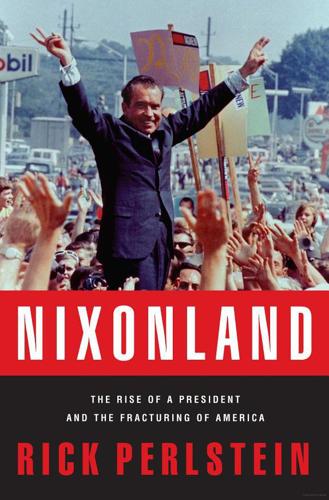
Nixonland: The Rise of a President and the Fracturing of America
by
Rick Perlstein
Published 1 Jan 2008
This hucksterism. Hadn’t Richard Nixon worked as a carnival barker as a boy in Prescott, Arizona? Hadn’t the organizer of the Committee of 100, an advertising executive, proclaimed, upon discovering Richard Nixon in 1946, “This is salable merchandise!”? They would laugh at Nixon’s line from the so-called Kitchen Debate with Nikita Khrushchev in Moscow in 1959: “There are some instances where you may be ahead of us, for example, in the development of the thrust of your rockets for the investigation of outer space; there may be some instances in which we are ahead of you—in color television, for instance.” Soft-drink CEO Donald Kendall would later get Nixon his job at a New York law firm in 1963 as quid pro quo for the vice president’s arranging for Khrushchev to be photographed with a bottle of Pepsi.
…
Everything was political. His job itself had roots in a chit: Mudge, Stern, Baldwin, and Todd was the first firm to take Don Kendall up on his offer to throw Pepsi’s international legal work to whichever firm offered Richard Nixon a job (that repaid Nixon for having Nikita Khrushchev drink Pepsi during the 1959 Kitchen Debate visit). When a columnist wrote that Nixon spent only one day a week at the law office and the rest scheming politics, Nixon wrote each of his clients individually to say it wasn’t true. In fact it was only half-true. His office—a museum of political kitsch: silver plates engraved with testimonials, commemorative gavels, keys to cities, a long walnut cabinet filled with signed photographs of heads of state in the line of sight of visitors sitting across from Nixon at the polished walnut desk—was where he did his politics.
…
Safire appealed to Salisbury’s news sense (more absurd still: if its importance was its newsworthiness, a front-page article about it would do just as well). Finally, Safire pulled out his final argument. He appealed to the halcyon memories they shared of Moscow, in 1959, when Salisbury had been the pool reporter for the Kitchen Debate, and Safire was flacking the American exhibition. Salisbury reminded Safire that for him to even consider the request the appraisal would have to be submitted before the afternoon deadline. If so, he promised to read and consider it. A gaggle of reporters gathered in the Nixon, Mudge antechamber awaiting the promised document.
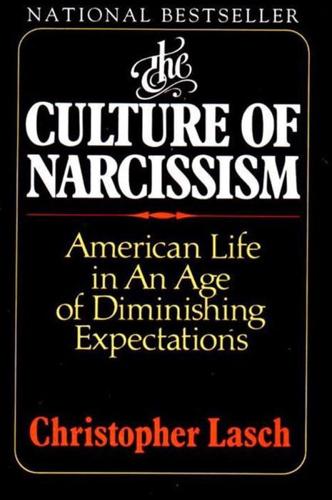
The Culture of Narcissism: American Life in an Age of Diminishing Expectations
by
Christopher Lasch
Published 1 Jan 1978
The executive then asserts his presidential qualities by conveying his determina" " , Nixon devoted most of his career to the art of . , , rise to the occasion With his theatrical conception of politics Nixon prided himself on his ability to distinguish a convincing . , 80 : The Culture cf Narcissism he be- performance from a poor one, as in the Hiss case, when came certain that Whittaker Chambers was telling the truth " because "I did not feel that [his performance] was an act. watching the Army-McCarthy hearings on television, After he re" I prefer professionals to amateur actors. During his famous kitchen debate with Nikita Khruschchev, marked scornfully, " " Nixon was sure that Khruschchev "was going through an act, and he later reproached Marshal Georgi Zhukov with underestimating tlje intelligence of the Soviet people. They aren't dumb. They know when somebody is acting and when it s the real thing-particularly when the acts have been so amateurish.

B Is for Bauhaus, Y Is for YouTube: Designing the Modern World From a to Z
by
Deyan Sudjic
Published 17 Feb 2015
He had already been to America by this time. He had even seen the work of Charles Eames and Buckminster Fuller at first hand, albeit in Russia. Kaplický had seen the American National Exhibition in Moscow, designed by George Nelson with an installation by Charles and Ray Eames, during which Khrushchev had the famous kitchen debate with Richard Nixon. Kaplický made his way to London in 1968, but not before he had painted, in careful Cyrillic, a sign on a wall at the National Museum in Prague, inviting the Russian neighbours to go back to where they had come from, and checking with his mother that he had got the grammar right.
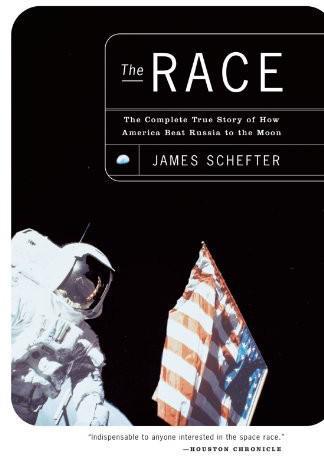
The Race: The Complete True Story of How America Beat Russia to the Moon
by
James Schefter
Published 2 Jan 2000
Vice President Richard Nixon was there for the unveiling, and so was Soviet Premier Nikita Khrushchev. When Nixon showed the premier through the U.S. exhibit, he extolled the virtues of American society. Khrushchev listened for only a few moments before challenging him in front of reporters and cameras. The so-called Kitchen Debate turned into a loud, finger-wagging confrontation over the merits of socialism versus American-style democracy. Then a funny thing happened. When the verbal imbroglio ended, reporters and photographers wandered away. Nixon took Khrushchev behind the exhibit’s panels and kitchen equipment, where they had a polite and respectful conversation.
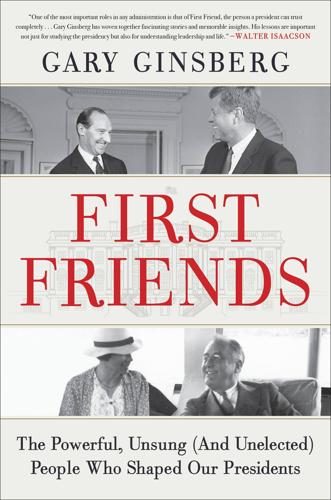
First Friends: The Powerful, Unsung (And Unelected) People Who Shaped Our Presidents
by
Gary Ginsberg
Published 14 Sep 2021
“Bill listened to representatives of the Bush administration give answers to questions about domestic policy, economic policy at Bilderberg,” Hillary remembered, “and he thought their answers were so weak that I knew he came out of it very fired up and thinking maybe he would actually run that year. It was very important to his decision to run.” Four months later, standing on the steps of the old Capitol in downtown Little Rock, Bill Clinton announced his candidacy for president of the United States. Just a decade removed from his kitchen debate with Jordan about whether to leave politics for good, Clinton now stood as one of only five credible candidates—still a long shot but with a clear path to the nomination if everything went right. And everything seemed to be going right by the middle of January 1992, when he outraised, outhustled, and outsmarted his opponents.
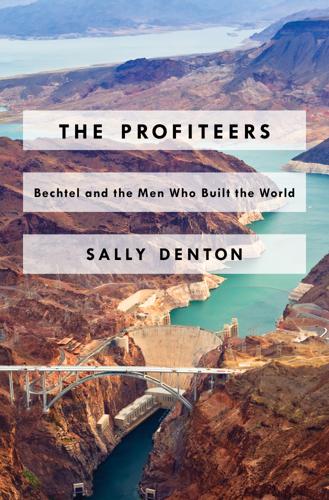
The Profiteers
by
Sally Denton
Stephen Bechtel Sr. privately railed against the campus demonstrators as Communist rabble-rousers. (9) In July 1959 in Moscow, Soviet leader Nikita Khruschev and Vice President Richard Nixon engaged in a heated exchange about capitalism and communism. Tempers flared as the two men taunted each other. Dubbed the “Kitchen Debate,” the tense confrontation came to epitomize the Cold War and the fervent anticommunist sentiments of the Bechtel family. (10) Steve Bechtel Sr. had cultivated a close relationship with the Iranian shah, Mohammad Reza Pahlavi, seen here with President Nixon at a reviewing stand in Washington, DC.
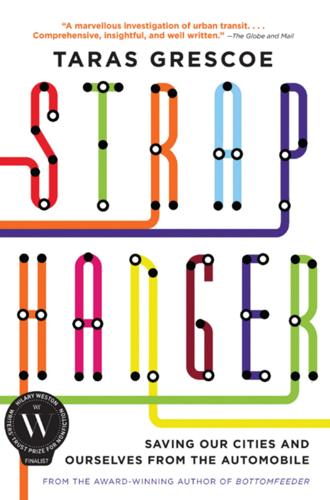
Straphanger
by
Taras Grescoe
Published 8 Sep 2011
Nixon boasted that the General Electric oven and range, the washing machine topped with Dash detergent, and the government-backed, 25-year mortgage were all within reach of the average American steelworker. Scoffing at the electric lemon juicer, Khrushchev satirically asked if Americans also had machines that would spoon-feed them their dinner and chew it for them, too. Eyewitnesses say the kitchen debate, as it became known, had no clear victor, but Nixon, photographed confidently jabbing Khrushchev in the chest as he stressed America’s lead in material goods, ended up winning the propaganda battle. The next day, the Soviets struck back. First deputy premier Frol Kozlov, who had traveled extensively in the United States, told the assembled press that the New York subway was “lousy.”
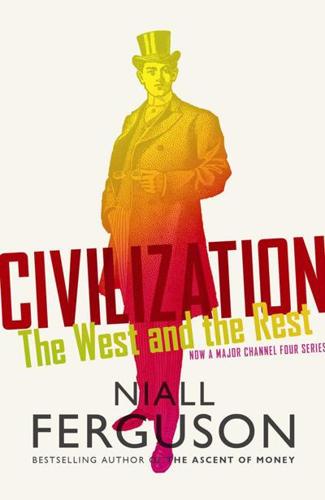
Civilization: The West and the Rest
by
Niall Ferguson
Published 28 Feb 2011
But from the vantage point of the real East – from the Middle East to the Far East – the world seemed simply to have been carved up between two rival Wests, a capitalist one and a communist one. The people in charge looked roughly similar. Indeed, in many ways the Soviet Union longed to imitate the United States, to build the same weapons – and also the same consumer goods. As Khrushchev made abundantly clear in his ‘kitchen debate’ with Nixon, the Soviets aspired to match the Americans product for product. Sartorially there was little to choose between the two men. Clad in perfect black and white, as if to confound the colour television technology he was supposed to be marketing, Nixon looked like the dour Californian lawyer he was.
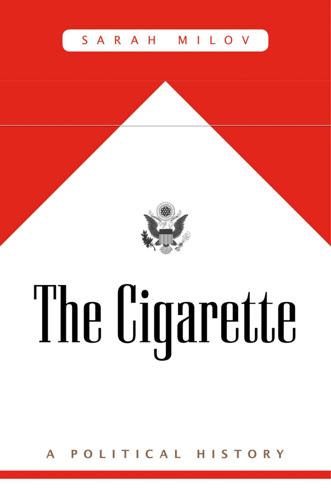
The Cigarette: A Political History
by
Sarah Milov
Published 1 Oct 2019
USDA Economic Research Service, Tobacco Situation 1959–1960, 6. 89. Brandt, Cigarette Century, 136–148. 90. John Fischer, “The Country Slickers Take Us Again,” Harper’s Magazine, December 1955. 91. The reporter quoted, Harrison Salisbury, was the New York Times longtime Russian affairs correspondent most famous for reporting on the “Kitchen Debate” between Nixon and Khrushchev a few years later. His observations of the Iowa farm visit were quoted by Fischer, the editor of Harper’s, in the “Country Slickers” article cited in note 90. 92. Farm Policy, 113. 93. “Public Found Divided on Farm Subsidy,” Los Angeles Times, August 28, 1953. 94.

Capitalism in America: A History
by
Adrian Wooldridge
and
Alan Greenspan
Published 15 Oct 2018
The suburban dream: mother and daughter wave goodbye to father as he drives to work in January 1949. Real GDP had increased 4.2 percent the previous year. A re-creation of the first McDonald’s restaurant, which was opened in Des Plaines, Illinois, by Ray Kroc on April 15, 1955. The “kitchen debate” between Vice President Richard Nixon and Nikita Khrushchev during a tour of the American National Exhibition in Sokolniki Park in Moscow, 1959. General Electric advertises an automatic dishwasher in 1948. Dishwashers and other “electronic servants” liberated Americans, particularly women, from domestic drudgery and enormously increased the amount of time available for leisure.
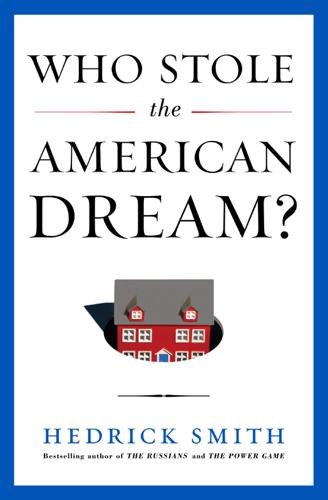
Who Stole the American Dream?
by
Hedrick Smith
Published 10 Sep 2012
Nixon to Khrushchev: The United States Is a “Classless Society” In Washington, a bipartisan political consensus gave its blessing to sharing America’s wealth democratically and to linking corporate profits to the American Dream of steady work, rising pay, and generous benefits. In 1959, at the heart of the Cold War, Richard Nixon, as vice president under Dwight Eisenhower, bragged about America’s shared prosperity in his “kitchen debate” with Soviet premier Nikita Khrushchev at the U.S. exhibition in Moscow. Nixon rattled off to his Communist adversary the bounty enjoyed by the American middle class—three-fourths of America’s 44 million families owned their own homes, and collectively they owned 56 million cars, 50 million television sets, and 143 million radios.

A Generation of Sociopaths: How the Baby Boomers Betrayed America
by
Bruce Cannon Gibney
Published 7 Mar 2017
Figures for American civilian casualities are not available, but are usually assumed to range from negligible to up to 120,000, which is a tiny fraction of the 16 million estimated civilian deaths in the Soviet Union, the 6 million in Poland, and the 13 million in China. There is considerable debate about the exact numbers each nation lost, but the general conclusion is that German, Chinese, and Soviet losses were immense—tens of millions. 8. Davidson, Justin. “The Kitchen Debate’s Actual Kitchen.” New York, 8 May 2011, nymag.com/realestate/features/commack-moscow-2011-5/. 9. Ibid.; US Census, Current Population Reports, Current Income (1961) at table B (for 1959 incomes). 10. Zillow.com; FRED, MEFAINUSA672N. Long Island is a different place now and 358 Towline Road has had some upgrades over the years, which explains some of the relative price increase.

Troublemakers: Silicon Valley's Coming of Age
by
Leslie Berlin
Published 7 Nov 2017
The boldly lettered AMPEX sign was a landmark to drivers along the five-year-old Bayshore/101 Freeway that connected San Francisco to the Peninsula. The company’s reach extended deep into American culture. In 1948, Bing Crosby had agreed to continue broadcasting his popular radio show only if he could use the new Ampex recorder to tape-delay his broadcasts. In 1959, Ampex technology had recorded the famous “kitchen debate” between Vice President Richard Nixon and Soviet premier Nikita Khrushchev at the opening of the American National Exhibition in Moscow. A few years later, Ampex video recorders had captured images of Earth sent by astronauts circling the moon aboard Apollo 8.13 His mother’s connection got Alcorn an interview at Ampex.
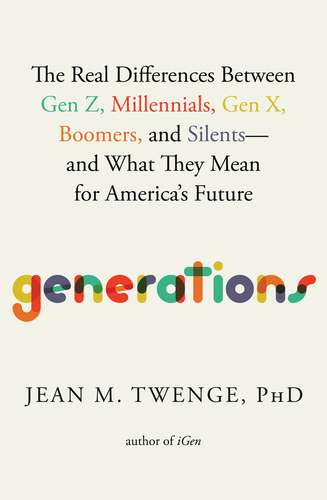
Generations: The Real Differences Between Gen Z, Millennials, Gen X, Boomers, and Silents—and What They Mean for America's Future
by
Jean M. Twenge
Published 25 Apr 2023
Another possibility is technology, specifically the proliferation of labor-saving devices during the postwar era, which made having children and keeping a home a little less onerous. Refrigerators, washing machines, electric stoves, dishwashers, and other household appliances, rare early in the 20th century, became more available after the war and throughout the 1950s. In his “kitchen debate” with Soviet premier Nikita Khrushchev in 1959, then–vice president Richard Nixon opined that one of the primary goals of the American economy was to “make life easier for our housewives.” Even with those conveniences, the Silent generation of women raising a big crop of Boomer kids did not have it easy.
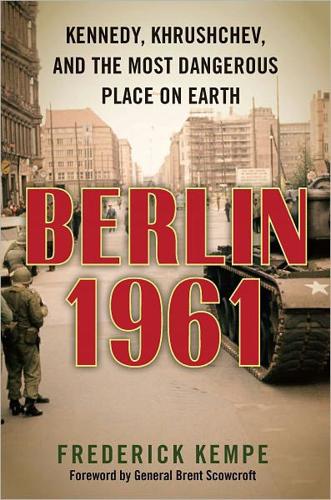
Berlin 1961: Kennedy, Khrushchev, and the Most Dangerous Place on Earth
by
Frederick Kempe
Published 30 Apr 2011
Now he was working impatiently through multiple channels to land an early summit meeting with Kennedy in hopes it would solve his Berlin problem. During the campaign, the Soviet leader’s instructions to his top officials had been clear, regarding both his desire for a Kennedy win and his distaste for Richard Nixon, who as Eisenhower’s anticommunist vice president had humiliated him in Moscow during their so-called Kitchen Debate over the relative advantages of their two systems. “We can also influence the American presidential election!” he had told his comrades then. “We would never give Nixon such a present.” After the election, Khrushchev had crowed that by refusing to release the airmen he had personally cost Nixon the few hundred thousand votes he would have required for his victory.

The Code: Silicon Valley and the Remaking of America
by
Margaret O'Mara
Published 8 Jul 2019
“Of the nine parks featured in the display,” the Stanford University Bulletin proudly informed its readers, “the co-sponsors considered the Stanford Park the most photogenic.”13 Then, in the fall of 1959, none other than Soviet Premier Nikita Khrushchev came to visit IBM San Jose as he made a swing through California on the heels of his “kitchen debate” in Moscow with Vice President Richard Nixon. IBM executives were apprehensive about the visit. Khrushchev had caused a stink in Los Angeles a day earlier after not being allowed to visit Disneyland. He showed up in San Jose wearing a longshoreman’s cap given to him by the firebrand San Francisco labor organizer Harry Bridges earlier that morning.
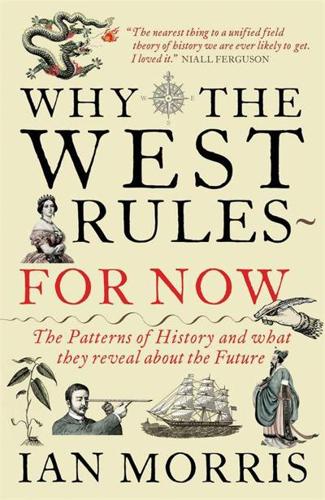
Why the West Rules--For Now: The Patterns of History, and What They Reveal About the Future
by
Ian Morris
Published 11 Oct 2010
McCloy (1945), cited from Judt 2005, p. 39. 534 “atomic bomb itself”: Churchill, cited from Reynolds 2000, p. 36. 534 “create on the whole”: Internal Kremlin report (1953), cited from Holloway 1994, p. 337. 534 “Strange as it”: Churchill, speech to the House of Commons (1955), cited from Gaddis 2005, p. 65. 536 “Let’s be frank”: Prime Minister Harold Macmillan, speech at Bedford (July 20, 1957), cited from Sandbrook 2005, p. 80. 536 “residents from raw estates”: Philip Larkin, “Here” (1964), reprinted in Larkin 2004, p. 79. 537 “Snub-nosed monsters”: John Steinbeck, The Grapes of Wrath (1939), chapter 5. 540 “if allowed to”: Riesman 1964 (first published 1951), p. 64. 541 “Anything that makes” etc.: Richard Nixon and Leonid Brezhnev, the “Kitchen Debate” (Moscow, July 24, 1959), cited from http://teachingamericanhistory.org/library/index.asp?document=176. 542 “Flog the driver!” etc.: joke cited from Reynolds 2000, p. 541n. 544 “The dearest people”: China Youth Journal (September 27, 1958), cited from Becker 1996, p. 106. 544 “The Party Secretary”: Bo Yibo, Retrospective of Several Big Decisions and Incidents (1993), cited from Becker 1996, pp. 107–108. 544 “It is not”: Lu Xianwen (autumn 1959), cited from Becker 1996, p. 113. 544 “The air is filled”: Report from Jiangxi (autumn 1958), cited from Spence 1990, p. 580. 545 “Communism is paradise”: Song by Kang Sheng (1958), cited from Becker 1996, p. 104. 545 “No one in our family”: Informant, cited from Becker 1996, p. 136. 545 “The worst thing”: Informant, cited from Becker 1996, p. 138. 546 “It was class hatred”: “Li XX,” public poster in Beijing (September 2, 1966), cited from MacFarquhar and Schoenhals 2006, p. 127. 546 “This was the week”: President Richard Nixon, toast at a dinner in Shanghai (February 27, 1972), cited from Reynolds 2000, p. 329. 547 “bookworms who”: Zhang Tiesheng (1973), cited from Spence 1990, p. 638.
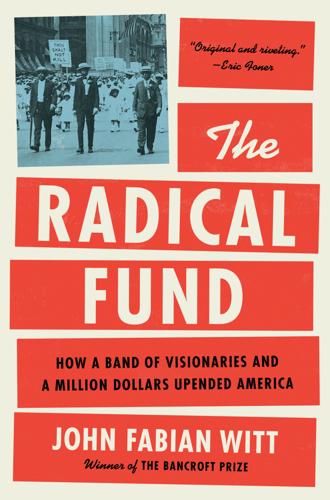
The Radical Fund: How a Band of Visionaries and a Million Dollars Upended America
by
John Fabian Witt
Published 14 Oct 2025
Sweet armed the group with a shotgun, two rifles, and six pistols, along with four hundred rounds of ammunition.44 Sweet’s precautions proved warranted. At around 8 p.m. the first rock came through the window into the Sweets’ bedroom. Soon rocks rained onto the roof. More windows broke. And then while Sweet, his wife, and a friend huddled in the downstairs kitchen, debating what to do, rifle shots rang out from the second floor. One of the men in Sweet’s small company had fired across Garland Avenue, mortally wounding one white rioter and injuring another. Police soon entered the house and arrested Sweet and the others inside. Criminal charges for murder against the whole group soon followed.45 * * * James Weldon Johnson learned of the Detroit case while trying, on doctor’s orders, to get some exercise at a golf course in New Jersey.
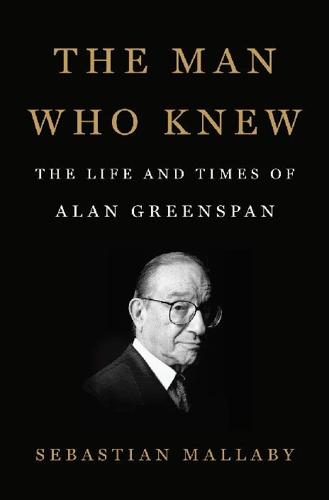
The Man Who Knew: The Life and Times of Alan Greenspan
by
Sebastian Mallaby
Published 10 Oct 2016
And yet there was something about Nixon that still left Greenspan with an odd feeling. The candidate’s syntax was too exquisite; his attire was too impeccable; there was an impression of stiffness.28 Eight years earlier, on a visit as vice president to Moscow, this same Nixon had had the panache to hold an impromptu “kitchen debate” against Soviet premier Nikita Khrushchev before an array of flashbulbs. But now, in the comfort of his own office, he seemed almost wooden. Sincerity, Greenspan would learn, did not come easily to Nixon. • • • Beyond the calm of the candidate’s office, America was broiling. The Newark violence was only one of forty-six riots in that summer of 1967.29 A total of eighty-one people died in the mayhem, and the destruction of property ran into the millions of dollars.30 Polls suddenly found “crime and lawlessness” rocketing toward the top of citizens’ concerns, displacing the cost of living and unemployment.31 Undeterred by the moderates on the campaign staff, Greenspan pressed his libertarian diagnosis more forcefully than ever.